-
Posts
115,311 -
Joined
-
Last visited
-
Days Won
585
Content Type
Profiles
Forums
Events
Posts posted by RETIREDFAN1
-
-
-
Billy Dee Williams made his film debut in 1959 in "The Last Angry Man,", opposite Paul Muni, in which he portrayed a delinquent young man. He rose to stardom after starring in the critically lauded blockbuster biographical television movie, "Brian's Song" (1971), in which he played Chicago Bears star football player Gale Sayers, who stood by his friend Brian Piccolo (played by James Caan), during Piccolo's struggle with terminal cancer. The film was so popular that it was given a theatrical release. Both Williams and Caan were nominated for Emmy Awards for best actor for their performances. In real-life, Caan, who had been a football player in high school, was a much better athlete than Williams. In the movie, Sayers, was supposed to surpass Piccolo, in speed and playing ability. When Caan raced Williams on film, Caan was forced to slow down considerably, so Williams could beat him.
Having broken through, Williams became one of America's most well-known black film actors of the 1970s, after starring in a string of critically acclaimed and popular movies, many of them in the "blaxploitation" genre. In 1972, he starred as Billie Holiday's husband Louis McKay in Motown Productions' Holiday biopic "Lady Sings the Blues." The film was a box office blockbuster, becoming one of the highest-grossing films of the year and received five Academy Award nominations. Diana Ross starred in Lady Sings the Blues opposite Williams; Motown paired the two of them again three years later in the successful follow-up project "Mahogany."
Beginning in 1980, Williams portrayed Lando Calrissian in "The Empire Strikes Back" and "Return of the Jedi" (1983). Calrissian's charm proved to be popular with audiences.
"There's always been a lot of misunderstanding about Lando's character. I used to pick up my daughter from elementary school and get into arguments with little children who would accuse me of betraying Han Solo."

-
-
-
Just now, EnjoyLife said:
Is it a "big screen" film thats worth the cost of going to the movies? Or wait for streaming?
I went to the theater........loved it ....
-
 1
1
-
-
-
-
-
-
-
-
-
𝐓𝐇𝐄𝐎𝐑𝐘 𝐎𝐅 𝐑𝐄𝐋𝐀𝐓𝐈𝐕𝐈𝐓𝐘
#sondreaas #education #Einstein #facts #learn #generalrelativity #physics𝘛𝘩𝘦 𝘵𝘩𝘦𝘰𝘳𝘺 𝘰𝘧 𝘳𝘦𝘭𝘢𝘵𝘪𝘷𝘪𝘵𝘺 𝘪𝘴 𝘢 𝘧𝘳𝘢𝘮𝘦𝘸𝘰𝘳𝘬 𝘧𝘰𝘳 𝘶𝘯𝘥𝘦𝘳𝘴𝘵𝘢𝘯𝘥𝘪𝘯𝘨 𝘵𝘩𝘦 𝘱𝘩𝘺𝘴𝘪𝘤𝘢𝘭 𝘪𝘮𝘱𝘭𝘪𝘤𝘢𝘵𝘪𝘰𝘯𝘴 𝘰𝘧 𝘴𝘱𝘢𝘤𝘦, 𝘵𝘪𝘮𝘦, 𝘢𝘯𝘥 𝘨𝘳𝘢𝘷𝘪𝘵𝘺. 𝘗𝘳𝘪𝘮𝘢𝘳𝘪𝘭𝘺 𝘧𝘰𝘳𝘮𝘶𝘭𝘢𝘵𝘦𝘥 𝘣𝘺 𝘈𝘭𝘣𝘦𝘳𝘵 𝘌𝘪𝘯𝘴𝘵𝘦𝘪𝘯, 𝘪𝘵 𝘤𝘰𝘮𝘱𝘳𝘪𝘴𝘦𝘴 𝘵𝘸𝘰 𝘮𝘢𝘪𝘯 𝘤𝘰𝘮𝘱𝘰𝘯𝘦𝘯𝘵𝘴: 𝘴𝘱𝘦𝘤𝘪𝘢𝘭 𝘳𝘦𝘭𝘢𝘵𝘪𝘷𝘪𝘵𝘺 𝘢𝘯𝘥 𝘨𝘦𝘯𝘦𝘳𝘢𝘭 𝘳𝘦𝘭𝘢𝘵𝘪𝘷𝘪𝘵𝘺.
* 𝘐𝘯𝘵𝘳𝘰𝘥𝘶𝘤𝘦𝘥 𝘪𝘯 1905, 𝘴𝘱𝘦𝘤𝘪𝘢𝘭 𝘳𝘦𝘭𝘢𝘵𝘪𝘷𝘪𝘵𝘺 𝘪𝘴 𝘢 𝘬𝘪𝘯𝘦𝘮𝘢𝘵𝘪𝘤𝘴 𝘵𝘩𝘦𝘰𝘳𝘺 𝘣𝘢𝘴𝘦𝘥 𝘰𝘯 𝘵𝘸𝘰 𝘧𝘶𝘯𝘥𝘢𝘮𝘦𝘯𝘵𝘢𝘭 𝘱𝘰𝘴𝘵𝘶𝘭𝘢𝘵𝘦𝘴. 𝘛𝘩𝘦 𝘧𝘪𝘳𝘴𝘵 𝘱𝘰𝘴𝘵𝘶𝘭𝘢𝘵𝘦, 𝘬𝘯𝘰𝘸𝘯 𝘢𝘴 𝘵𝘩𝘦 𝘱𝘳𝘪𝘯𝘤𝘪𝘱𝘭𝘦 𝘰𝘧 𝘴𝘱𝘦𝘤𝘪𝘢𝘭 𝘳𝘦𝘭𝘢𝘵𝘪𝘷𝘪𝘵𝘺, 𝘢𝘴𝘴𝘦𝘳𝘵𝘴 𝘵𝘩𝘢𝘵 𝘵𝘩𝘦 𝘭𝘢𝘸𝘴 𝘰𝘧 𝘱𝘩𝘺𝘴𝘪𝘤𝘴 𝘢𝘳𝘦 𝘪𝘥𝘦𝘯𝘵𝘪𝘤𝘢𝘭 𝘧𝘰𝘳 𝘢𝘭𝘭 𝘰𝘣𝘴𝘦𝘳𝘷𝘦𝘳𝘴 𝘮𝘰𝘷𝘪𝘯𝘨 𝘶𝘯𝘪𝘧𝘰𝘳𝘮𝘭𝘺 𝘪𝘯 𝘴𝘵𝘳𝘢𝘪𝘨𝘩𝘵 𝘭𝘪𝘯𝘦𝘴 𝘳𝘦𝘭𝘢𝘵𝘪𝘷𝘦 𝘵𝘰 𝘦𝘢𝘤𝘩 𝘰𝘵𝘩𝘦𝘳. 𝘛𝘩𝘦 𝘴𝘦𝘤𝘰𝘯𝘥 𝘱𝘰𝘴𝘵𝘶𝘭𝘢𝘵𝘦 𝘮𝘢𝘪𝘯𝘵𝘢𝘪𝘯𝘴 𝘵𝘩𝘢𝘵 𝘵𝘩𝘦 𝘴𝘱𝘦𝘦𝘥 𝘰𝘧 𝘭𝘪𝘨𝘩𝘵 𝘪𝘯 𝘢 𝘷𝘢𝘤𝘶𝘶𝘮 𝘪𝘴 𝘤𝘰𝘯𝘴𝘵𝘢𝘯𝘵 𝘢𝘯𝘥 𝘪𝘯𝘥𝘦𝘱𝘦𝘯𝘥𝘦𝘯𝘵 𝘰𝘧 𝘵𝘩𝘦 𝘮𝘰𝘵𝘪𝘰𝘯 𝘰𝘧 𝘵𝘩𝘦 𝘭𝘪𝘨𝘩𝘵 𝘴𝘰𝘶𝘳𝘤𝘦.
𝘎𝘦𝘯𝘦𝘳𝘢𝘭 𝘳𝘦𝘭𝘢𝘵𝘪𝘷𝘪𝘵𝘺, 𝘱𝘳𝘰𝘱𝘰𝘴𝘦𝘥 𝘪𝘯 1915, 𝘤𝘰𝘯𝘤𝘦𝘱𝘵𝘶𝘢𝘭𝘪𝘻𝘦𝘴 𝘨𝘳𝘢𝘷𝘪𝘵𝘺 𝘢𝘴 𝘣𝘰𝘵𝘩 𝘢 𝘮𝘢𝘯𝘪𝘧𝘦𝘴𝘵𝘢𝘵𝘪𝘰𝘯 𝘰𝘧 𝘵𝘩𝘦 𝘤𝘶𝘳𝘷𝘢𝘵𝘶𝘳𝘦 𝘰𝘧 𝘧𝘰𝘶𝘳-𝘥𝘪𝘮𝘦𝘯𝘴𝘪𝘰𝘯𝘢𝘭 𝘴𝘱𝘢𝘤𝘦𝘵𝘪𝘮𝘦 𝘢𝘯𝘥 𝘢 𝘳𝘦𝘴𝘶𝘭𝘵 𝘰𝘧 𝘵𝘩𝘦 𝘮𝘰𝘵𝘪𝘰𝘯 𝘸𝘪𝘵𝘩𝘪𝘯 𝘵𝘩𝘦 𝘳𝘦𝘧𝘦𝘳𝘦𝘯𝘤𝘦 𝘧𝘳𝘢𝘮𝘦 𝘰𝘧 𝘵𝘩𝘦 𝘰𝘣𝘴𝘦𝘳𝘷𝘦𝘳. 𝘛𝘩𝘪𝘴 𝘵𝘩𝘦𝘰𝘳𝘺 𝘱𝘳𝘰𝘷𝘪𝘥𝘦𝘴 𝘵𝘩𝘦 𝘧𝘰𝘶𝘯𝘥𝘢𝘵𝘪𝘰𝘯 𝘧𝘰𝘳 𝘥𝘦𝘴𝘤𝘳𝘪𝘣𝘪𝘯𝘨 𝘵𝘩𝘦 𝘶𝘯𝘪𝘷𝘦𝘳𝘴𝘦 𝘰𝘯 𝘢 𝘭𝘢𝘳𝘨𝘦 𝘴𝘤𝘢𝘭𝘦 𝘪𝘯 𝘳𝘦𝘭𝘢𝘵𝘪𝘷𝘪𝘴𝘵𝘪𝘤 𝘤𝘰𝘴𝘮𝘰𝘭𝘰𝘨𝘪𝘤𝘢𝘭 𝘮𝘰𝘥𝘦𝘭𝘴.
𝘎𝘦𝘯𝘦𝘳𝘢𝘭 𝘳𝘦𝘭𝘢𝘵𝘪𝘷𝘪𝘵𝘺 𝘦𝘹𝘵𝘦𝘯𝘥𝘴 𝘵𝘩𝘦 𝘱𝘳𝘪𝘯𝘤𝘪𝘱𝘭𝘦𝘴 𝘰𝘧 𝘴𝘱𝘦𝘤𝘪𝘢𝘭 𝘳𝘦𝘭𝘢𝘵𝘪𝘷𝘪𝘵𝘺 𝘸𝘪𝘵𝘩 𝘵𝘩𝘦 𝘦𝘲𝘶𝘪𝘷𝘢𝘭𝘦𝘯𝘤𝘦 𝘱𝘳𝘪𝘯𝘤𝘪𝘱𝘭𝘦, 𝘸𝘩𝘪𝘤𝘩 𝘱𝘰𝘴𝘪𝘵𝘴 𝘵𝘩𝘢𝘵 𝘭𝘰𝘤𝘢𝘭𝘭𝘺, 𝘨𝘳𝘢𝘷𝘪𝘵𝘢𝘵𝘪𝘰𝘯𝘢𝘭 𝘦𝘧𝘧𝘦𝘤𝘵𝘴 𝘪𝘯 𝘢 𝘴𝘵𝘢𝘵𝘪𝘰𝘯𝘢𝘳𝘺 𝘴𝘱𝘢𝘤𝘦 𝘯𝘦𝘢𝘳 𝘢 𝘮𝘢𝘴𝘴𝘪𝘷𝘦 𝘣𝘰𝘥𝘺, 𝘴𝘶𝘤𝘩 𝘢𝘴 𝘌𝘢𝘳𝘵𝘩'𝘴 𝘴𝘶𝘳𝘧𝘢𝘤𝘦, 𝘢𝘳𝘦 𝘪𝘯𝘥𝘪𝘴𝘵𝘪𝘯𝘨𝘶𝘪𝘴𝘩𝘢𝘣𝘭𝘦 𝘧𝘳𝘰𝘮 𝘵𝘩𝘦 𝘦𝘧𝘧𝘦𝘤𝘵𝘴 𝘦𝘹𝘱𝘦𝘳𝘪𝘦𝘯𝘤𝘦𝘥 𝘪𝘯 𝘢𝘯 𝘢𝘤𝘤𝘦𝘭𝘦𝘳𝘢𝘵𝘦𝘥 𝘰𝘳 𝘳𝘰𝘵𝘢𝘵𝘪𝘯𝘨 𝘴𝘱𝘢𝘤𝘦 𝘧𝘢𝘳 𝘧𝘳𝘰𝘮 𝘮𝘢𝘴𝘴𝘪𝘷𝘦 𝘣𝘰𝘥𝘪𝘦𝘴.
𝐒𝐏𝐄𝐂𝐈𝐀𝐋 𝐓𝐇𝐄𝐎𝐑𝐘 𝐎𝐅 𝐑𝐄𝐋𝐀𝐓𝐈𝐕𝐈𝐓𝐘
𝘛𝘩𝘦 𝘴𝘱𝘦𝘤𝘪𝘢𝘭 𝘵𝘩𝘦𝘰𝘳𝘺 𝘰𝘧 𝘳𝘦𝘭𝘢𝘵𝘪𝘷𝘪𝘵𝘺 𝘪𝘴 𝘧𝘰𝘶𝘯𝘥𝘦𝘥 𝘶𝘱𝘰𝘯 𝘵𝘸𝘰 𝘢𝘹𝘪𝘰𝘮𝘴:
1. 𝘛𝘩𝘦 𝘱𝘳𝘪𝘯𝘤𝘪𝘱𝘭𝘦 𝘰𝘧 𝘳𝘦𝘭𝘢𝘵𝘪𝘷𝘪𝘵𝘺 𝘢𝘴𝘴𝘦𝘳𝘵𝘴 𝘵𝘩𝘢𝘵 𝘪𝘵 𝘪𝘴 𝘪𝘮𝘱𝘰𝘴𝘴𝘪𝘣𝘭𝘦 𝘵𝘰 𝘥𝘦𝘵𝘦𝘳𝘮𝘪𝘯𝘦 𝘵𝘩𝘦 𝘢𝘣𝘴𝘰𝘭𝘶𝘵𝘦 𝘷𝘦𝘭𝘰𝘤𝘪𝘵𝘺 𝘰𝘧 𝘢𝘯 𝘰𝘣𝘫𝘦𝘤𝘵 — 𝘵𝘩𝘢𝘵 𝘪𝘴, 𝘪𝘵𝘴 𝘴𝘱𝘦𝘦𝘥 𝘳𝘦𝘭𝘢𝘵𝘪𝘷𝘦 𝘵𝘰 𝘵𝘩𝘦 𝘷𝘢𝘤𝘶𝘶𝘮 𝘰𝘧 𝘴𝘱𝘢𝘤𝘦 — 𝘵𝘩𝘳𝘰𝘶𝘨𝘩 𝘮𝘦𝘤𝘩𝘢𝘯𝘪𝘤𝘢𝘭, 𝘰𝘱𝘵𝘪𝘤𝘢𝘭, 𝘰𝘳 𝘦𝘭𝘦𝘤𝘵𝘳𝘰𝘮𝘢𝘨𝘯𝘦𝘵𝘪𝘤 𝘮𝘦𝘢𝘯𝘴.
2. 𝘛𝘩𝘦 𝘭𝘪𝘨𝘩𝘵 𝘴𝘱𝘦𝘦𝘥 𝘱𝘰𝘴𝘵𝘶𝘭𝘢𝘵𝘦 𝘴𝘵𝘢𝘵𝘦𝘴 𝘵𝘩𝘢𝘵 𝘵𝘩𝘦 𝘴𝘱𝘦𝘦𝘥 𝘰𝘧 𝘭𝘪𝘨𝘩𝘵 𝘪𝘯 𝘢 𝘷𝘢𝘤𝘶𝘶𝘮 𝘪𝘴 𝘤𝘰𝘯𝘴𝘵𝘢𝘯𝘵 𝘧𝘰𝘳 𝘢𝘭𝘭 𝘰𝘣𝘴𝘦𝘳𝘷𝘦𝘳𝘴, 𝘳𝘦𝘨𝘢𝘳𝘥𝘭𝘦𝘴𝘴 𝘰𝘧 𝘵𝘩𝘦 𝘮𝘰𝘵𝘪𝘰𝘯 𝘰𝘧 𝘵𝘩𝘦 𝘭𝘪𝘨𝘩𝘵 𝘴𝘰𝘶𝘳𝘤𝘦.SEE ILLUSTRATiON PICTURE NO. 1
𝘛𝘩𝘦 𝘱𝘳𝘪𝘯𝘤𝘪𝘱𝘭𝘦 𝘰𝘧 𝘳𝘦𝘭𝘢𝘵𝘪𝘷𝘪𝘵𝘺 𝘧𝘰𝘳 𝘮𝘦𝘤𝘩𝘢𝘯𝘪𝘤𝘢𝘭 𝘱𝘩𝘦𝘯𝘰𝘮𝘦𝘯𝘢 𝘸𝘢𝘴 𝘪𝘯𝘪𝘵𝘪𝘢𝘭𝘭𝘺 𝘱𝘳𝘰𝘱𝘰𝘴𝘦𝘥 𝘣𝘺 𝘎𝘢𝘭𝘪𝘭𝘦𝘰 𝘎𝘢𝘭𝘪𝘭𝘦𝘪 𝘪𝘯 𝘵𝘩𝘦 17𝘵𝘩 𝘤𝘦𝘯𝘵𝘶𝘳𝘺, 𝘣𝘶𝘵 𝘌𝘪𝘯𝘴𝘵𝘦𝘪𝘯 𝘦𝘹𝘱𝘢𝘯𝘥𝘦𝘥 𝘪𝘵 𝘵𝘰 𝘦𝘯𝘤𝘰𝘮𝘱𝘢𝘴𝘴 𝘢𝘭𝘭 𝘱𝘩𝘺𝘴𝘪𝘤𝘢𝘭 𝘱𝘩𝘦𝘯𝘰𝘮𝘦𝘯𝘢, 𝘪𝘯𝘤𝘭𝘶𝘥𝘪𝘯𝘨 𝘦𝘭𝘦𝘤𝘵𝘳𝘰𝘮𝘢𝘨𝘯𝘦𝘵𝘪𝘤 𝘢𝘯𝘥 𝘰𝘱𝘵𝘪𝘤𝘢𝘭 𝘱𝘩𝘦𝘯𝘰𝘮𝘦𝘯𝘢.
𝘍𝘳𝘰𝘮 𝘵𝘩𝘪𝘴 𝘵𝘩𝘦𝘰𝘳𝘺, 𝘪𝘵 𝘧𝘰𝘭𝘭𝘰𝘸𝘴 𝘵𝘩𝘢𝘵 𝘵𝘩𝘦 𝘯𝘰𝘵𝘪𝘰𝘯 𝘰𝘧 𝘴𝘪𝘮𝘶𝘭𝘵𝘢𝘯𝘦𝘪𝘵𝘺 𝘪𝘴 𝘯𝘰𝘵 𝘢𝘣𝘴𝘰𝘭𝘶𝘵𝘦. 𝘌𝘷𝘦𝘯𝘵𝘴 𝘥𝘦𝘦𝘮𝘦𝘥 𝘴𝘪𝘮𝘶𝘭𝘵𝘢𝘯𝘦𝘰𝘶𝘴 𝘣𝘺 𝘰𝘯𝘦 𝘰𝘣𝘴𝘦𝘳𝘷𝘦𝘳 𝘮𝘢𝘺 𝘯𝘰𝘵 𝘣𝘦 𝘱𝘦𝘳𝘤𝘦𝘪𝘷𝘦𝘥 𝘢𝘴 𝘴𝘶𝘤𝘩 𝘣𝘺 𝘢𝘯𝘰𝘵𝘩𝘦𝘳 𝘰𝘣𝘴𝘦𝘳𝘷𝘦𝘳 𝘪𝘯 𝘮𝘰𝘵𝘪𝘰𝘯 𝘳𝘦𝘭𝘢𝘵𝘪𝘷𝘦 𝘵𝘰 𝘵𝘩𝘦 𝘧𝘪𝘳𝘴𝘵. 𝘛𝘩𝘦 𝘱𝘩𝘦𝘯𝘰𝘮𝘦𝘯𝘰𝘯 𝘰𝘧 𝘭𝘦𝘯𝘨𝘵𝘩 𝘤𝘰𝘯𝘵𝘳𝘢𝘤𝘵𝘪𝘰𝘯, 𝘵𝘩𝘦 𝘵𝘳𝘢𝘯𝘴𝘪𝘵𝘪𝘰𝘯 𝘧𝘳𝘰𝘮 𝘰𝘯𝘦 𝘤𝘰𝘰𝘳𝘥𝘪𝘯𝘢𝘵𝘦 𝘴𝘺𝘴𝘵𝘦𝘮 𝘵𝘰 𝘢𝘯𝘰𝘵𝘩𝘦𝘳, 𝘪𝘴 𝘦𝘷𝘪𝘥𝘦𝘯𝘤𝘦𝘥 𝘣𝘺 𝘵𝘩𝘦 𝘰𝘣𝘴𝘦𝘳𝘷𝘢𝘵𝘪𝘰𝘯 𝘵𝘩𝘢𝘵 𝘵𝘩𝘦 𝘭𝘦𝘯𝘨𝘵𝘩 𝘰𝘧 𝘢 𝘳𝘰𝘥 𝘢𝘱𝘱𝘦𝘢𝘳𝘴 𝘴𝘩𝘰𝘳𝘵𝘦𝘳 𝘸𝘩𝘦𝘯 𝘮𝘦𝘢𝘴𝘶𝘳𝘦𝘥 𝘣𝘺 𝘢𝘯 𝘰𝘣𝘴𝘦𝘳𝘷𝘦𝘳 𝘮𝘰𝘷𝘪𝘯𝘨 𝘱𝘢𝘴𝘵 𝘵𝘩𝘦 𝘳𝘰𝘥 𝘵𝘩𝘢𝘯 𝘸𝘩𝘦𝘯 𝘮𝘦𝘢𝘴𝘶𝘳𝘦𝘥 𝘣𝘺 𝘢𝘯 𝘰𝘣𝘴𝘦𝘳𝘷𝘦𝘳 𝘮𝘰𝘷𝘪𝘯𝘨 𝘸𝘪𝘵𝘩 𝘵𝘩𝘦 𝘳𝘰𝘥 𝘢𝘯𝘥 𝘵𝘩𝘦𝘳𝘦𝘧𝘰𝘳𝘦 𝘴𝘵𝘢𝘵𝘪𝘰𝘯𝘢𝘳𝘺 𝘳𝘦𝘭𝘢𝘵𝘪𝘷𝘦 𝘵𝘰 𝘪𝘵.𝐓𝐈𝐌𝐄 𝐃𝐈𝐋𝐀𝐓𝐈𝐎𝐍
𝘝𝘦𝘭𝘰𝘤𝘪𝘵𝘺-𝘪𝘯𝘥𝘶𝘤𝘦𝘥 𝘦𝘹𝘱𝘢𝘯𝘴𝘪𝘰𝘯 𝘰𝘧 𝘵𝘪𝘮𝘦 𝘪𝘴 𝘰𝘣𝘴𝘦𝘳𝘷𝘦𝘥 𝘵𝘩𝘳𝘰𝘶𝘨𝘩 𝘵𝘩𝘦 𝘱𝘩𝘦𝘯𝘰𝘮𝘦𝘯𝘰𝘯 𝘸𝘩𝘦𝘳𝘦 𝘢 𝘮𝘰𝘣𝘪𝘭𝘦 𝘤𝘭𝘰𝘤𝘬 𝘵𝘪𝘤𝘬𝘴 𝘮𝘰𝘳𝘦 𝘴𝘭𝘰𝘸𝘭𝘺 𝘤𝘰𝘮𝘱𝘢𝘳𝘦𝘥 𝘵𝘰 𝘢 𝘴𝘵𝘢𝘵𝘪𝘰𝘯𝘢𝘳𝘺 𝘰𝘯𝘦. 𝘊𝘰𝘯𝘴𝘪𝘥𝘦𝘳 𝘵𝘩𝘦 𝘱𝘳𝘪𝘯𝘤𝘪𝘱𝘭𝘦 𝘰𝘧 𝘢 𝘭𝘪𝘨𝘩𝘵 𝘤𝘭𝘰𝘤𝘬, 𝘤𝘰𝘯𝘴𝘵𝘳𝘶𝘤𝘵𝘦𝘥 𝘣𝘺 𝘢𝘭𝘭𝘰𝘸𝘪𝘯𝘨 𝘢 𝘱𝘩𝘰𝘵𝘰𝘯 𝘵𝘰 𝘵𝘳𝘢𝘷𝘦𝘳𝘴𝘦 𝘵𝘩𝘦 𝘴𝘱𝘢𝘤𝘦 𝘣𝘦𝘵𝘸𝘦𝘦𝘯 𝘢 𝘵𝘳𝘢𝘪𝘯 𝘤𝘢𝘳'𝘴 𝘧𝘭𝘰𝘰𝘳 𝘢𝘯𝘥 𝘤𝘦𝘪𝘭𝘪𝘯𝘨. 𝘛𝘰 𝘢𝘯 𝘰𝘣𝘴𝘦𝘳𝘷𝘦𝘳 𝘪𝘯𝘴𝘪𝘥𝘦 𝘵𝘩𝘦 𝘤𝘢𝘳, 𝘵𝘩𝘦 𝘱𝘩𝘰𝘵𝘰𝘯'𝘴 𝘱𝘢𝘵𝘩 𝘪𝘴 𝘷𝘦𝘳𝘵𝘪𝘤𝘢𝘭. 𝘍𝘳𝘰𝘮 𝘵𝘩𝘦 𝘴𝘵𝘢𝘯𝘥𝘱𝘰𝘪𝘯𝘵 𝘰𝘧 𝘴𝘰𝘮𝘦𝘰𝘯𝘦 𝘰𝘯 𝘢 𝘴𝘵𝘢𝘵𝘪𝘰𝘯 𝘱𝘭𝘢𝘵𝘧𝘰𝘳𝘮 𝘢𝘴 𝘵𝘩𝘦 𝘵𝘳𝘢𝘪𝘯 𝘴𝘱𝘦𝘦𝘥𝘴 𝘣𝘺, 𝘵𝘩𝘦 𝘱𝘩𝘰𝘵𝘰𝘯 𝘧𝘰𝘭𝘭𝘰𝘸𝘴 𝘢 𝘥𝘪𝘢𝘨𝘰𝘯𝘢𝘭, 𝘻𝘪𝘨𝘻𝘢𝘨 𝘵𝘳𝘢𝘫𝘦𝘤𝘵𝘰𝘳𝘺. 𝘊𝘰𝘯𝘴𝘦𝘲𝘶𝘦𝘯𝘵𝘭𝘺, 𝘵𝘩𝘦 𝘭𝘪𝘨𝘩𝘵 𝘵𝘳𝘢𝘷𝘦𝘳𝘴𝘦𝘴 𝘢 𝘭𝘰𝘯𝘨𝘦𝘳 𝘱𝘢𝘵𝘩 𝘧𝘰𝘳 𝘦𝘢𝘤𝘩 "𝘵𝘪𝘤𝘬" (𝘣𝘰𝘶𝘯𝘤𝘪𝘯𝘨 𝘣𝘦𝘵𝘸𝘦𝘦𝘯 𝘵𝘩𝘦 𝘧𝘭𝘰𝘰𝘳 𝘢𝘯𝘥 𝘤𝘦𝘪𝘭𝘪𝘯𝘨). 𝘎𝘪𝘷𝘦𝘯 𝘵𝘩𝘢𝘵 𝘵𝘩𝘦 𝘴𝘱𝘦𝘦𝘥 𝘰𝘧 𝘭𝘪𝘨𝘩𝘵 𝘳𝘦𝘮𝘢𝘪𝘯𝘴 𝘤𝘰𝘯𝘴𝘵𝘢𝘯𝘵 𝘸𝘩𝘦𝘵𝘩𝘦𝘳 𝘮𝘦𝘢𝘴𝘶𝘳𝘦𝘥 𝘧𝘳𝘰𝘮 𝘵𝘩𝘦 𝘵𝘳𝘢𝘪𝘯 𝘰𝘳 𝘵𝘩𝘦 𝘱𝘭𝘢𝘵𝘧𝘰𝘳𝘮, 𝘵𝘩𝘦 𝘤𝘭𝘰𝘤𝘬 𝘢𝘱𝘱𝘦𝘢𝘳𝘴 𝘵𝘰 𝘵𝘪𝘤𝘬 𝘮𝘰𝘳𝘦 𝘴𝘭𝘰𝘸𝘭𝘺 𝘸𝘩𝘦𝘯 𝘷𝘪𝘦𝘸𝘦𝘥 𝘧𝘳𝘰𝘮 𝘵𝘩𝘦 𝘱𝘭𝘢𝘵𝘧𝘰𝘳𝘮 𝘵𝘩𝘢𝘯 𝘧𝘳𝘰𝘮 𝘸𝘪𝘵𝘩𝘪𝘯 𝘵𝘩𝘦 𝘤𝘢𝘳.𝘈 𝘴𝘪𝘨𝘯𝘪𝘧𝘪𝘤𝘢𝘯𝘵 𝘰𝘶𝘵𝘤𝘰𝘮𝘦 𝘰𝘧 𝘵𝘩𝘦 𝘵𝘩𝘦𝘰𝘳𝘺 𝘰𝘧 𝘴𝘱𝘦𝘤𝘪𝘢𝘭 𝘳𝘦𝘭𝘢𝘵𝘪𝘷𝘪𝘵𝘺 𝘪𝘴 𝘵𝘩𝘦 𝘯𝘰𝘯-𝘭𝘪𝘯𝘦𝘢𝘳 𝘢𝘥𝘥𝘪𝘵𝘪𝘰𝘯 𝘰𝘧 𝘷𝘦𝘭𝘰𝘤𝘪𝘵𝘪𝘦𝘴, 𝘤𝘰𝘯𝘵𝘳𝘢𝘴𝘵𝘪𝘯𝘨 𝘸𝘪𝘵𝘩 𝘵𝘩𝘦 𝘴𝘵𝘳𝘢𝘪𝘨𝘩𝘵𝘧𝘰𝘳𝘸𝘢𝘳𝘥 𝘴𝘶𝘮𝘮𝘢𝘵𝘪𝘰𝘯 𝘰𝘣𝘴𝘦𝘳𝘷𝘦𝘥 𝘪𝘯 𝘤𝘭𝘢𝘴𝘴𝘪𝘤𝘢𝘭 𝘱𝘩𝘺𝘴𝘪𝘤𝘴. 𝘐𝘯 𝘢𝘯 𝘪𝘯𝘴𝘵𝘢𝘯𝘤𝘦 𝘸𝘩𝘦𝘳𝘦 𝘢 𝘤𝘢𝘳𝘳𝘪𝘢𝘨𝘦 𝘮𝘰𝘷𝘦𝘴 𝘢𝘵 𝘷𝘦𝘭𝘰𝘤𝘪𝘵𝘺 \(𝘷_1\) 𝘢𝘯𝘥 𝘢𝘯 𝘪𝘯𝘥𝘪𝘷𝘪𝘥𝘶𝘢𝘭 𝘸𝘪𝘵𝘩𝘪𝘯 𝘪𝘵 𝘢𝘥𝘷𝘢𝘯𝘤𝘦𝘴 𝘧𝘰𝘳𝘸𝘢𝘳𝘥 𝘢𝘵 𝘷𝘦𝘭𝘰𝘤𝘪𝘵𝘺 \(𝘷_2\), 𝘤𝘭𝘢𝘴𝘴𝘪𝘤𝘢𝘭 𝘮𝘦𝘤𝘩𝘢𝘯𝘪𝘤𝘴 𝘸𝘰𝘶𝘭𝘥 𝘴𝘪𝘮𝘱𝘭𝘺 𝘴𝘶𝘮 𝘵𝘩𝘦𝘴𝘦 𝘵𝘰 𝘧𝘪𝘯𝘥 𝘵𝘩𝘦 𝘱𝘦𝘳𝘴𝘰𝘯'𝘴 𝘨𝘳𝘰𝘶𝘯𝘥-𝘳𝘦𝘭𝘢𝘵𝘪𝘷𝘦 𝘷𝘦𝘭𝘰𝘤𝘪𝘵𝘺 𝘢𝘴 \(𝘷 = 𝘷1 + 𝘷2\).
See picture 1.0 for formula, c represents the speed of light
A𝘴 𝘷𝘦𝘭𝘰𝘤𝘪𝘵𝘪𝘦𝘴 𝘢𝘱𝘱𝘳𝘰𝘢𝘤𝘩 𝘵𝘩𝘦 𝘴𝘱𝘦𝘦𝘥 𝘰𝘧 𝘭𝘪𝘨𝘩𝘵, 𝘵𝘦𝘳𝘮𝘦𝘥 𝘳𝘦𝘭𝘢𝘵𝘪𝘷𝘪𝘴𝘵𝘪𝘤 𝘴𝘱𝘦𝘦𝘥𝘴, 𝘵𝘩𝘦 𝘥𝘦𝘷𝘪𝘢𝘵𝘪𝘰𝘯 𝘣𝘦𝘤𝘰𝘮𝘦𝘴 𝘴𝘪𝘨𝘯𝘪𝘧𝘪𝘤𝘢𝘯𝘵𝘭𝘺 𝘱𝘳𝘰𝘯𝘰𝘶𝘯𝘤𝘦𝘥.
𝐓𝐇𝐄 𝐒𝐏𝐄𝐄𝐃 𝐂𝐀𝐍𝐍𝐎𝐓 𝐁𝐄 𝐄𝐗𝐂𝐄𝐄𝐃𝐄𝐃
𝘛𝘩𝘦 𝘢𝘧𝘰𝘳𝘦𝘮𝘦𝘯𝘵𝘪𝘰𝘯𝘦𝘥 𝘦𝘲𝘶𝘢𝘵𝘪𝘰𝘯 𝘢𝘭𝘴𝘰 𝘪𝘭𝘭𝘶𝘴𝘵𝘳𝘢𝘵𝘦𝘴 𝘵𝘩𝘢𝘵 𝘵𝘩𝘦 𝘴𝘱𝘦𝘦𝘥 𝘰𝘧 𝘭𝘪𝘨𝘩𝘵 𝘪𝘯 𝘢 𝘷𝘢𝘤𝘶𝘶𝘮 𝘪𝘴 𝘢𝘯 𝘶𝘭𝘵𝘪𝘮𝘢𝘵𝘦 𝘵𝘩𝘳𝘦𝘴𝘩𝘰𝘭𝘥 𝘵𝘩𝘢𝘵 𝘤𝘢𝘯𝘯𝘰𝘵 𝘣𝘦 𝘦𝘹𝘤𝘦𝘦𝘥𝘦𝘥, 𝘥𝘪𝘷𝘦𝘳𝘨𝘪𝘯𝘨 𝘧𝘳𝘰𝘮 𝘵𝘩𝘦 𝘱𝘳𝘪𝘯𝘤𝘪𝘱𝘭𝘦𝘴 𝘰𝘧 𝘤𝘭𝘢𝘴𝘴𝘪𝘤𝘢𝘭 𝘮𝘦𝘤𝘩𝘢𝘯𝘪𝘤𝘴 𝘸𝘩𝘪𝘤𝘩 𝘴𝘶𝘨𝘨𝘦𝘴𝘵 𝘢 𝘣𝘰𝘥𝘺 𝘸𝘪𝘭𝘭 𝘤𝘰𝘯𝘵𝘪𝘯𝘶𝘢𝘭𝘭𝘺 𝘢𝘤𝘤𝘦𝘭𝘦𝘳𝘢𝘵𝘦 𝘶𝘯𝘥𝘦𝘳 𝘵𝘩𝘦 𝘪𝘯𝘧𝘭𝘶𝘦𝘯𝘤𝘦 𝘰𝘧 𝘢 𝘤𝘰𝘯𝘴𝘵𝘢𝘯𝘵 𝘧𝘰𝘳𝘤𝘦.𝘈𝘤𝘤𝘰𝘳𝘥𝘪𝘯𝘨 𝘵𝘰 𝘵𝘩𝘦 𝘵𝘩𝘦𝘰𝘳𝘺 𝘰𝘧 𝘳𝘦𝘭𝘢𝘵𝘪𝘷𝘪𝘵𝘺, 𝘢𝘴 𝘷𝘦𝘭𝘰𝘤𝘪𝘵𝘪𝘦𝘴 𝘢𝘱𝘱𝘳𝘰𝘢𝘤𝘩 𝘴𝘪𝘨𝘯𝘪𝘧𝘪𝘤𝘢𝘯𝘵 𝘧𝘳𝘢𝘤𝘵𝘪𝘰𝘯𝘴 𝘰𝘧 𝘵𝘩𝘦 𝘴𝘱𝘦𝘦𝘥 𝘰𝘧 𝘭𝘪𝘨𝘩𝘵, 𝘵𝘩𝘦 𝘳𝘢𝘵𝘦 𝘰𝘧 𝘢𝘤𝘤𝘦𝘭𝘦𝘳𝘢𝘵𝘪𝘰𝘯 𝘥𝘪𝘮𝘪𝘯𝘪𝘴𝘩𝘦𝘴. 𝘐𝘯𝘴𝘵𝘦𝘢𝘥, 𝘢𝘯 𝘪𝘯𝘤𝘳𝘦𝘢𝘴𝘦 𝘪𝘯 𝘵𝘩𝘦 𝘣𝘰𝘥𝘺'𝘴 𝘮𝘢𝘴𝘴 𝘪𝘴 𝘰𝘣𝘴𝘦𝘳𝘷𝘦𝘥.
𝘛𝘩𝘶𝘴, 𝘮𝘢𝘴𝘴 𝘪𝘴 𝘯𝘰𝘵 𝘢 𝘤𝘰𝘯𝘴𝘵𝘢𝘯𝘵 𝘣𝘶𝘵 𝘪𝘴 𝘨𝘪𝘷𝘦𝘯 𝘣𝘺 𝘵𝘩𝘦 𝘧𝘰𝘳𝘮𝘶𝘭𝘢 𝘪𝘯 𝘱𝘪𝘤𝘵𝘶𝘳𝘦 1.2.
𝘛𝘩𝘪𝘴 𝘪𝘴 𝘥𝘦𝘧𝘪𝘯𝘦𝘥 𝘣𝘺 𝘵𝘩𝘦 𝘦𝘲𝘶𝘢𝘵𝘪𝘰𝘯 𝘵𝘩𝘦 𝘳𝘦𝘴𝘵 𝘮𝘢𝘴𝘴 𝘰𝘧 𝘵𝘩𝘦 𝘣𝘰𝘥𝘺, 𝘰𝘳 𝘵𝘩𝘦 𝘮𝘢𝘴𝘴 𝘮𝘦𝘢𝘴𝘶𝘳𝘦𝘥 𝘸𝘩𝘦𝘯 𝘵𝘩𝘦 𝘣𝘰𝘥𝘺 𝘪𝘴 𝘴𝘵𝘢𝘵𝘪𝘰𝘯𝘢𝘳𝘺 𝘳𝘦𝘭𝘢𝘵𝘪𝘷𝘦 𝘵𝘰 𝘵𝘩𝘦 𝘰𝘣𝘴𝘦𝘳𝘷𝘦𝘳.𝘛𝘩𝘪𝘴 𝘧𝘰𝘳𝘮𝘶𝘭𝘢 𝘴𝘩𝘰𝘸𝘴 𝘶𝘴 𝘵𝘩𝘢𝘵 𝘸𝘩𝘦𝘯 𝘸𝘦 𝘢𝘱𝘱𝘳𝘰𝘢𝘤𝘩 𝘭𝘪𝘨𝘩𝘵 𝘴𝘱𝘦𝘦𝘥 𝘤, 𝘺 𝘢𝘯𝘥 𝘵𝘩𝘦𝘳𝘦𝘧𝘰𝘳𝘦 𝘵𝘩𝘦 𝘮𝘢𝘴𝘴 𝘨𝘰𝘦𝘴 𝘵𝘰𝘸𝘢𝘳𝘥𝘴 𝘪𝘯𝘧𝘪𝘯𝘪𝘵𝘺. 𝘛𝘩𝘪𝘴 𝘧𝘰𝘳𝘮𝘶𝘭𝘢 𝘴𝘩𝘰𝘸𝘴 𝘵𝘩𝘢𝘵 𝘵𝘩𝘦 𝘴𝘱𝘦𝘦𝘥 𝘰𝘧 𝘭𝘪𝘨𝘩𝘵 𝘪𝘴 𝘪𝘮𝘱𝘰𝘴𝘴𝘪𝘣𝘭𝘦 𝘵𝘰 𝘦𝘹𝘤𝘦𝘦𝘥.
𝐆𝐄𝐍𝐄𝐑𝐀𝐋 𝐓𝐇𝐄𝐎𝐑𝐘 𝐎𝐅 𝐑𝐄𝐋𝐀𝐓𝐈𝐕𝐈𝐓𝐘
𝘐𝘯 𝘌𝘪𝘯𝘴𝘵𝘦𝘪𝘯'𝘴 𝘴𝘱𝘦𝘤𝘪𝘢𝘭 𝘵𝘩𝘦𝘰𝘳𝘺 𝘰𝘧 𝘳𝘦𝘭𝘢𝘵𝘪𝘷𝘪𝘵𝘺, 𝘰𝘯𝘭𝘺 𝘳𝘦𝘧𝘦𝘳𝘦𝘯𝘤𝘦 𝘧𝘳𝘢𝘮𝘦𝘴 𝘪𝘯 𝘶𝘯𝘪𝘧𝘰𝘳𝘮, 𝘴𝘵𝘳𝘢𝘪𝘨𝘩𝘵-𝘭𝘪𝘯𝘦 𝘮𝘰𝘵𝘪𝘰𝘯, 𝘬𝘯𝘰𝘸𝘯 𝘢𝘴 𝘪𝘯𝘦𝘳𝘵𝘪𝘢𝘭 𝘧𝘳𝘢𝘮𝘦𝘴, 𝘢𝘳𝘦 𝘤𝘰𝘯𝘴𝘪𝘥𝘦𝘳𝘦𝘥. 𝘌𝘪𝘯𝘴𝘵𝘦𝘪𝘯 𝘢𝘳𝘨𝘶𝘦𝘥 𝘵𝘩𝘢𝘵 𝘵𝘩𝘦 𝘱𝘳𝘪𝘯𝘤𝘪𝘱𝘭𝘦 𝘰𝘧 𝘳𝘦𝘭𝘢𝘵𝘪𝘷𝘪𝘵𝘺 𝘴𝘩𝘰𝘶𝘭𝘥 𝘢𝘱𝘱𝘭𝘺 𝘵𝘰 𝘢𝘭𝘭 𝘵𝘺𝘱𝘦𝘴 𝘰𝘧 𝘮𝘰𝘵𝘪𝘰𝘯, 𝘪𝘯𝘤𝘭𝘶𝘥𝘪𝘯𝘨 𝘢𝘤𝘤𝘦𝘭𝘦𝘳𝘢𝘵𝘦𝘥 𝘢𝘯𝘥 𝘳𝘰𝘵𝘢𝘵𝘪𝘰𝘯𝘢𝘭 𝘮𝘰𝘵𝘪𝘰𝘯. 𝘜𝘯𝘥𝘦𝘳 𝘵𝘩𝘪𝘴 𝘱𝘳𝘦𝘮𝘪𝘴𝘦, 𝘪𝘵 𝘣𝘦𝘤𝘰𝘮𝘦𝘴 𝘦𝘹𝘱𝘦𝘳𝘪𝘮𝘦𝘯𝘵𝘢𝘭𝘭𝘺 𝘪𝘯𝘥𝘪𝘴𝘵𝘪𝘯𝘨𝘶𝘪𝘴𝘩𝘢𝘣𝘭𝘦 𝘵𝘰 𝘥𝘦𝘵𝘦𝘳𝘮𝘪𝘯𝘦 𝘸𝘩𝘦𝘵𝘩𝘦𝘳 𝘰𝘯𝘦 𝘪𝘴 𝘪𝘯, 𝘧𝘰𝘳 𝘪𝘯𝘴𝘵𝘢𝘯𝘤𝘦, 𝘢 𝘳𝘰𝘵𝘢𝘵𝘪𝘯𝘨 𝘰𝘳 𝘯𝘰𝘯-𝘳𝘰𝘵𝘢𝘵𝘪𝘯𝘨 𝘧𝘳𝘢𝘮𝘦 𝘰𝘧 𝘳𝘦𝘧𝘦𝘳𝘦𝘯𝘤𝘦.𝐓𝐇𝐄 𝐏𝐑𝐈𝐍𝐂𝐈𝐏𝐋𝐄 𝐎𝐅 𝐄𝐐𝐔𝐈𝐕𝐀𝐋𝐄𝐍𝐂𝐄
𝘈 𝘤𝘰𝘳𝘯𝘦𝘳𝘴𝘵𝘰𝘯𝘦 𝘰𝘧 𝘵𝘩𝘦 𝘨𝘦𝘯𝘦𝘳𝘢𝘭 𝘵𝘩𝘦𝘰𝘳𝘺 𝘰𝘧 𝘳𝘦𝘭𝘢𝘵𝘪𝘷𝘪𝘵𝘺 𝘪𝘴 𝘵𝘩𝘦 𝘱𝘳𝘪𝘯𝘤𝘪𝘱𝘭𝘦 𝘰𝘧 𝘦𝘲𝘶𝘪𝘷𝘢𝘭𝘦𝘯𝘤𝘦, 𝘢𝘴 𝘢𝘳𝘵𝘪𝘤𝘶𝘭𝘢𝘵𝘦𝘥 𝘣𝘺 𝘌𝘪𝘯𝘴𝘵𝘦𝘪𝘯:
𝘛𝘩𝘦 𝘪𝘯𝘦𝘳𝘵𝘪𝘢𝘭 𝘧𝘰𝘳𝘤𝘦𝘴 𝘦𝘹𝘱𝘦𝘳𝘪𝘦𝘯𝘤𝘦𝘥 𝘸𝘪𝘵𝘩𝘪𝘯 𝘢𝘯 𝘢𝘤𝘤𝘦𝘭𝘦𝘳𝘢𝘵𝘦𝘥 𝘰𝘳 𝘳𝘰𝘵𝘢𝘵𝘪𝘯𝘨 𝘧𝘳𝘢𝘮𝘦 𝘰𝘧 𝘳𝘦𝘧𝘦𝘳𝘦𝘯𝘤𝘦 𝘱𝘳𝘰𝘥𝘶𝘤𝘦 𝘵𝘩𝘦 𝘴𝘢𝘮𝘦 𝘱𝘩𝘺𝘴𝘪𝘤𝘢𝘭 𝘦𝘧𝘧𝘦𝘤𝘵𝘴 𝘢𝘴 ("𝘢𝘳𝘦 𝘦𝘲𝘶𝘪𝘷𝘢𝘭𝘦𝘯𝘵 𝘵𝘰") 𝘨𝘳𝘢𝘷𝘪𝘵𝘢𝘵𝘪𝘰𝘯𝘢𝘭 𝘧𝘰𝘳𝘤𝘦𝘴 𝘦𝘮𝘢𝘯𝘢𝘵𝘪𝘯𝘨 𝘧𝘳𝘰𝘮 𝘮𝘢𝘴𝘴 𝘸𝘪𝘵𝘩 𝘨𝘳𝘢𝘷𝘪𝘵𝘺.𝘌𝘪𝘯𝘴𝘵𝘦𝘪𝘯 𝘶𝘴𝘦𝘥 𝘢 𝘵𝘩𝘰𝘶𝘨𝘩𝘵 𝘦𝘹𝘱𝘦𝘳𝘪𝘮𝘦𝘯𝘵 𝘵𝘰 𝘪𝘭𝘭𝘶𝘴𝘵𝘳𝘢𝘵𝘦 𝘵𝘩𝘪𝘴 𝘱𝘳𝘪𝘯𝘤𝘪𝘱𝘭𝘦: 𝘈𝘯 𝘰𝘣𝘴𝘦𝘳𝘷𝘦𝘳 𝘪𝘴 𝘪𝘯𝘴𝘪𝘥𝘦 𝘢 𝘴𝘵𝘢𝘵𝘪𝘰𝘯𝘢𝘳𝘺 𝘦𝘭𝘦𝘷𝘢𝘵𝘰𝘳 𝘢𝘯𝘥 𝘦𝘹𝘱𝘦𝘳𝘪𝘦𝘯𝘤𝘦𝘴 𝘢 𝘨𝘳𝘢𝘷𝘪𝘵𝘢𝘵𝘪𝘰𝘯𝘢𝘭 𝘧𝘪𝘦𝘭𝘥.
𝘈𝘯𝘰𝘵𝘩𝘦𝘳 𝘰𝘣𝘴𝘦𝘳𝘷𝘦𝘳 𝘧𝘭𝘰𝘢𝘵𝘴 𝘪𝘯𝘴𝘪𝘥𝘦 𝘢 𝘴𝘦𝘢𝘭𝘦𝘥 𝘣𝘰𝘹 𝘪𝘯 𝘴𝘱𝘢𝘤𝘦. 𝘛𝘩𝘦 𝘣𝘰𝘹 𝘵𝘩𝘦𝘯 𝘴𝘵𝘢𝘳𝘵𝘴 𝘵𝘰 𝘢𝘤𝘤𝘦𝘭𝘦𝘳𝘢𝘵𝘦 𝘶𝘱𝘸𝘢𝘳𝘥𝘴. 𝘊𝘰𝘯𝘴𝘦𝘲𝘶𝘦𝘯𝘵𝘭𝘺, 𝘵𝘩𝘦 𝘰𝘣𝘴𝘦𝘳𝘷𝘦𝘳 𝘧𝘦𝘦𝘭𝘴 𝘱𝘳𝘦𝘴𝘴𝘦𝘥 𝘢𝘨𝘢𝘪𝘯𝘴𝘵 𝘵𝘩𝘦 𝘣𝘰𝘹'𝘴 𝘧𝘭𝘰𝘰𝘳, 𝘦𝘹𝘱𝘦𝘳𝘪𝘦𝘯𝘤𝘪𝘯𝘨 𝘸𝘩𝘢𝘵 𝘴𝘦𝘦𝘮𝘴 𝘵𝘰 𝘣𝘦 𝘢 𝘨𝘳𝘢𝘷𝘪𝘵𝘢𝘵𝘪𝘰𝘯𝘢𝘭 𝘧𝘪𝘦𝘭𝘥 𝘢𝘤𝘵𝘪𝘯𝘨 𝘶𝘱𝘰𝘯 𝘩𝘪𝘮. 𝘌𝘹𝘱𝘦𝘳𝘪𝘮𝘦𝘯𝘵𝘴 𝘤𝘰𝘯𝘥𝘶𝘤𝘵𝘦𝘥 𝘶𝘯𝘥𝘦𝘳 𝘵𝘩𝘦𝘴𝘦 𝘵𝘸𝘰 𝘤𝘪𝘳𝘤𝘶𝘮𝘴𝘵𝘢𝘯𝘤𝘦𝘴 𝘺𝘪𝘦𝘭𝘥 𝘪𝘥𝘦𝘯𝘵𝘪𝘤𝘢𝘭 𝘰𝘶𝘵𝘤𝘰𝘮𝘦𝘴.
𝘛𝘩𝘦 𝘱𝘳𝘪𝘯𝘤𝘪𝘱𝘭𝘦 𝘰𝘧 𝘦𝘲𝘶𝘪𝘷𝘢𝘭𝘦𝘯𝘤𝘦 𝘢𝘭𝘭𝘰𝘸𝘴 𝘧𝘰𝘳 𝘵𝘩𝘦 𝘱𝘳𝘦𝘥𝘪𝘤𝘵𝘪𝘰𝘯 𝘰𝘧 𝘩𝘰𝘸 𝘢 𝘱𝘢𝘳𝘵𝘪𝘤𝘶𝘭𝘢𝘳 𝘱𝘩𝘺𝘴𝘪𝘤𝘢𝘭 𝘱𝘩𝘦𝘯𝘰𝘮𝘦𝘯𝘰𝘯 𝘵𝘩𝘢𝘵 𝘰𝘤𝘤𝘶𝘳𝘴 𝘪𝘯 𝘢 𝘨𝘳𝘢𝘷𝘪𝘵𝘢𝘵𝘪𝘰𝘯𝘢𝘭 𝘧𝘪𝘦𝘭𝘥 𝘨𝘦𝘯𝘦𝘳𝘢𝘵𝘦𝘥 𝘣𝘺 𝘮𝘢𝘴𝘴 𝘸𝘰𝘶𝘭𝘥 𝘵𝘳𝘢𝘯𝘴𝘱𝘪𝘳𝘦 𝘪𝘯 𝘢𝘯 𝘢𝘤𝘤𝘦𝘭𝘦𝘳𝘢𝘵𝘦𝘥 𝘳𝘦𝘧𝘦𝘳𝘦𝘯𝘤𝘦 𝘧𝘳𝘢𝘮𝘦 𝘢𝘸𝘢𝘺 𝘧𝘳𝘰𝘮 𝘢𝘯𝘺 𝘮𝘢𝘴𝘴. 𝘌𝘪𝘯𝘴𝘵𝘦𝘪𝘯'𝘴 𝘵𝘩𝘦𝘰𝘳𝘺 𝘪𝘮𝘱𝘭𝘪𝘦𝘴, 𝘢𝘮𝘰𝘯𝘨 𝘰𝘵𝘩𝘦𝘳 𝘵𝘩𝘪𝘯𝘨𝘴, 𝘵𝘩𝘢𝘵 𝘵𝘪𝘮𝘦 𝘢𝘯𝘥 𝘴𝘱𝘢𝘤𝘦, 𝘳𝘢𝘵𝘩𝘦𝘳 𝘵𝘩𝘢𝘯 𝘣𝘦𝘪𝘯𝘨 𝘤𝘰𝘯𝘴𝘪𝘥𝘦𝘳𝘦𝘥 𝘴𝘦𝘱𝘢𝘳𝘢𝘵𝘦 𝘦𝘯𝘵𝘪𝘵𝘪𝘦𝘴, 𝘢𝘳𝘦 𝘶𝘯𝘪𝘧𝘪𝘦𝘥 𝘪𝘯𝘵𝘰 𝘢 𝘧𝘰𝘶𝘳-𝘥𝘪𝘮𝘦𝘯𝘴𝘪𝘰𝘯𝘢𝘭 𝘴𝘱𝘢𝘤𝘦𝘵𝘪𝘮𝘦 𝘤𝘰𝘯𝘵𝘪𝘯𝘶𝘶𝘮.𝐈𝐍𝐄𝐑𝐓𝐈𝐀𝐋 𝐅𝐑𝐀𝐌𝐄𝐒
𝘐𝘯 𝘣𝘰𝘵𝘩 𝘕𝘦𝘸𝘵𝘰𝘯𝘪𝘢𝘯 𝘱𝘩𝘺𝘴𝘪𝘤𝘴 𝘢𝘯𝘥 𝘵𝘩𝘦 𝘵𝘩𝘦𝘰𝘳𝘺 𝘰𝘧 𝘳𝘦𝘭𝘢𝘵𝘪𝘷𝘪𝘵𝘺, 𝘪𝘯𝘦𝘳𝘵𝘪𝘢𝘭 𝘧𝘳𝘢𝘮𝘦𝘴 𝘢𝘳𝘦 𝘥𝘦𝘧𝘪𝘯𝘦𝘥 𝘢𝘴 𝘳𝘦𝘧𝘦𝘳𝘦𝘯𝘤𝘦 𝘴𝘺𝘴𝘵𝘦𝘮𝘴 𝘸𝘩𝘦𝘳𝘦 𝘕𝘦𝘸𝘵𝘰𝘯'𝘴 𝘧𝘪𝘳𝘴𝘵 𝘭𝘢𝘸 𝘢𝘱𝘱𝘭𝘪𝘦𝘴, 𝘮𝘦𝘢𝘯𝘪𝘯𝘨 𝘵𝘩𝘢𝘵 𝘢 𝘣𝘰𝘥𝘺 𝘢𝘵 𝘳𝘦𝘴𝘵 𝘯𝘰𝘵 𝘴𝘶𝘣𝘫𝘦𝘤𝘵𝘦𝘥 𝘵𝘰 𝘢𝘯𝘺 𝘧𝘰𝘳𝘤𝘦𝘴 𝘳𝘦𝘮𝘢𝘪𝘯𝘴 𝘢𝘵 𝘳𝘦𝘴𝘵.𝘐𝘯 𝘕𝘦𝘸𝘵𝘰𝘯𝘪𝘢𝘯 𝘱𝘩𝘺𝘴𝘪𝘤𝘴, 𝘨𝘳𝘢𝘷𝘪𝘵𝘺 𝘪𝘴 𝘤𝘰𝘯𝘴𝘪𝘥𝘦𝘳𝘦𝘥 𝘢 𝘧𝘰𝘳𝘤𝘦 𝘦𝘮𝘢𝘯𝘢𝘵𝘪𝘯𝘨 𝘧𝘳𝘰𝘮 𝘣𝘰𝘥𝘪𝘦𝘴, 𝘢𝘯𝘥 𝘪𝘯 𝘢 𝘳𝘦𝘧𝘦𝘳𝘦𝘯𝘤𝘦 𝘧𝘳𝘢𝘮𝘦 𝘢𝘵 𝘳𝘦𝘴𝘵 𝘧𝘢𝘳 𝘧𝘳𝘰𝘮 𝘢𝘯𝘺 𝘮𝘢𝘴𝘴𝘦𝘴, 𝘪𝘯 𝘢 𝘨𝘳𝘢𝘷𝘪𝘵𝘺-𝘧𝘳𝘦𝘦 𝘻𝘰𝘯𝘦, 𝘢 𝘳𝘦𝘭𝘦𝘢𝘴𝘦𝘥 𝘣𝘰𝘥𝘺, 𝘯𝘰𝘵 𝘶𝘯𝘥𝘦𝘳 𝘢𝘯𝘺 𝘧𝘰𝘳𝘤𝘦, 𝘳𝘦𝘮𝘢𝘪𝘯𝘴 𝘴𝘵𝘢𝘵𝘪𝘰𝘯𝘢𝘳𝘺. 𝘛𝘩𝘶𝘴, 𝘪𝘯 𝘕𝘦𝘸𝘵𝘰𝘯𝘪𝘢𝘯 𝘱𝘩𝘺𝘴𝘪𝘤𝘴, 𝘢 𝘴𝘺𝘴𝘵𝘦𝘮 𝘦𝘪𝘵𝘩𝘦𝘳 𝘢𝘵 𝘳𝘦𝘴𝘵 𝘰𝘳 𝘮𝘰𝘷𝘪𝘯𝘨 𝘢𝘵 𝘢 𝘤𝘰𝘯𝘴𝘵𝘢𝘯𝘵 𝘷𝘦𝘭𝘰𝘤𝘪𝘵𝘺 𝘲𝘶𝘢𝘭𝘪𝘧𝘪𝘦𝘴 𝘢𝘴 𝘢𝘯 𝘪𝘯𝘦𝘳𝘵𝘪𝘢𝘭 𝘧𝘳𝘢𝘮𝘦.
W𝘪𝘵𝘩𝘪𝘯 𝘵𝘩𝘦 𝘧𝘳𝘢𝘮𝘦𝘸𝘰𝘳𝘬 𝘰𝘧 𝘳𝘦𝘭𝘢𝘵𝘪𝘷𝘪𝘵𝘺, 𝘨𝘳𝘢𝘷𝘪𝘵𝘺 𝘪𝘴 𝘯𝘰𝘵 𝘵𝘳𝘦𝘢𝘵𝘦𝘥 𝘢𝘴 𝘢 𝘧𝘰𝘳𝘤𝘦, 𝘢𝘯𝘥 𝘰𝘯𝘭𝘺 𝘪𝘯 𝘳𝘦𝘧𝘦𝘳𝘦𝘯𝘤𝘦 𝘧𝘳𝘢𝘮𝘦𝘴 𝘦𝘹𝘱𝘦𝘳𝘪𝘦𝘯𝘤𝘪𝘯𝘨 𝘧𝘳𝘦𝘦 𝘧𝘢𝘭𝘭 𝘥𝘰 𝘣𝘰𝘥𝘪𝘦𝘴 𝘯𝘰𝘵 𝘢𝘤𝘵𝘦𝘥 𝘶𝘱𝘰𝘯 𝘣𝘺 𝘧𝘰𝘳𝘤𝘦𝘴 𝘳𝘦𝘮𝘢𝘪𝘯 𝘴𝘵𝘢𝘵𝘪𝘰𝘯𝘢𝘳𝘺. 𝘈𝘤𝘤𝘰𝘳𝘥𝘪𝘯𝘨 𝘵𝘰 𝘵𝘩𝘦 𝘵𝘩𝘦𝘰𝘳𝘺 𝘰𝘧 𝘳𝘦𝘭𝘢𝘵𝘪𝘷𝘪𝘵𝘺, 𝘵𝘳𝘶𝘦 𝘪𝘯𝘦𝘳𝘵𝘪𝘢𝘭 𝘧𝘳𝘢𝘮𝘦𝘴 𝘢𝘳𝘦 𝘵𝘩𝘰𝘴𝘦 𝘪𝘯 𝘧𝘳𝘦𝘦 𝘧𝘢𝘭𝘭.
𝐓𝐇𝐄 𝐈𝐍𝐄𝐑𝐓𝐈𝐀𝐋 𝐃𝐑𝐀𝐆 𝐄𝐅𝐅𝐄𝐂𝐓
𝘞𝘪𝘵𝘩𝘪𝘯 𝘵𝘩𝘦 𝘨𝘦𝘯𝘦𝘳𝘢𝘭 𝘵𝘩𝘦𝘰𝘳𝘺 𝘰𝘧 𝘳𝘦𝘭𝘢𝘵𝘪𝘷𝘪𝘵𝘺, 𝘌𝘪𝘯𝘴𝘵𝘦𝘪𝘯 𝘢𝘪𝘮𝘦𝘥 𝘵𝘰 𝘣𝘳𝘰𝘢𝘥𝘦𝘯 𝘵𝘩𝘦 𝘴𝘤𝘰𝘱𝘦 𝘰𝘧 𝘵𝘩𝘦 𝘱𝘳𝘪𝘯𝘤𝘪𝘱𝘭𝘦 𝘰𝘧 𝘳𝘦𝘭𝘢𝘵𝘪𝘷𝘪𝘵𝘺 𝘵𝘰 𝘦𝘯𝘤𝘰𝘮𝘱𝘢𝘴𝘴 𝘢𝘭𝘭 𝘧𝘰𝘳𝘮𝘴 𝘰𝘧 𝘮𝘰𝘵𝘪𝘰𝘯, 𝘯𝘰𝘵 𝘫𝘶𝘴𝘵 𝘶𝘯𝘪𝘧𝘰𝘳𝘮 𝘭𝘪𝘯𝘦𝘢𝘳 𝘮𝘰𝘵𝘪𝘰𝘯. 𝘐𝘯 𝘵𝘩𝘪𝘴 𝘤𝘰𝘯𝘵𝘦𝘹𝘵, 𝘵𝘩𝘦 𝘪𝘯𝘦𝘳𝘵𝘪𝘢𝘭 𝘥𝘳𝘢𝘨 𝘦𝘧𝘧𝘦𝘤𝘵 𝘢𝘴𝘴𝘶𝘮𝘦𝘴 𝘢 𝘴𝘪𝘨𝘯𝘪𝘧𝘪𝘤𝘢𝘯𝘵 𝘳𝘰𝘭𝘦. 𝘈 𝘥𝘦𝘵𝘢𝘪𝘭𝘦𝘥 𝘦𝘹𝘱𝘭𝘢𝘯𝘢𝘵𝘪𝘰𝘯 𝘰𝘧 𝘵𝘩𝘪𝘴 𝘱𝘩𝘦𝘯𝘰𝘮𝘦𝘯𝘰𝘯 𝘪𝘴 𝘱𝘳𝘰𝘷𝘪𝘥𝘦𝘥 𝘪𝘯 𝘵𝘩𝘦 𝘢𝘳𝘵𝘪𝘤𝘭𝘦 𝘥𝘪𝘴𝘤𝘶𝘴𝘴𝘪𝘯𝘨 𝘵𝘩𝘦 𝘱𝘳𝘪𝘯𝘤𝘪𝘱𝘭𝘦 𝘰𝘧 𝘳𝘦𝘭𝘢𝘵𝘪𝘷𝘪𝘵𝘺.𝐓𝐇𝐄 𝐂𝐀𝐔𝐒𝐄 𝐎𝐅 𝐆𝐑𝐀𝐕𝐈𝐓𝐘
𝘋𝘪𝘴𝘤𝘶𝘴𝘴𝘪𝘯𝘨 𝘨𝘳𝘢𝘷𝘪𝘵𝘺 𝘸𝘪𝘵𝘩𝘪𝘯 𝘵𝘩𝘦 𝘧𝘳𝘢𝘮𝘦𝘸𝘰𝘳𝘬 𝘰𝘧 𝘳𝘦𝘭𝘢𝘵𝘪𝘷𝘪𝘵𝘺 𝘯𝘦𝘤𝘦𝘴𝘴𝘪𝘵𝘢𝘵𝘦𝘴 𝘢 𝘥𝘪𝘴𝘵𝘪𝘯𝘤𝘵𝘪𝘰𝘯 𝘣𝘦𝘵𝘸𝘦𝘦𝘯 𝘭𝘰𝘤𝘢𝘭 𝘢𝘯𝘥 𝘨𝘭𝘰𝘣𝘢𝘭 𝘤𝘰𝘯𝘵𝘦𝘹𝘵𝘴. 𝘛𝘩𝘦 𝘴𝘦𝘯𝘴𝘢𝘵𝘪𝘰𝘯 𝘰𝘧 𝘨𝘳𝘢𝘷𝘪𝘵𝘢𝘵𝘪𝘰𝘯𝘢𝘭 𝘢𝘤𝘤𝘦𝘭𝘦𝘳𝘢𝘵𝘪𝘰𝘯 𝘪𝘴 𝘢 𝘭𝘰𝘤𝘢𝘭 𝘦𝘹𝘱𝘦𝘳𝘪𝘦𝘯𝘤𝘦, 𝘦𝘹𝘦𝘮𝘱𝘭𝘪𝘧𝘪𝘦𝘥 𝘣𝘺 𝘵𝘩𝘦 𝘢𝘤𝘤𝘦𝘭𝘦𝘳𝘢𝘵𝘪𝘰𝘯 𝘰𝘧 𝘢 𝘧𝘳𝘦𝘦𝘭𝘺 𝘧𝘢𝘭𝘭𝘪𝘯𝘨 𝘰𝘣𝘫𝘦𝘤𝘵 𝘥𝘰𝘸𝘯𝘸𝘢𝘳𝘥𝘴 𝘰𝘳 𝘵𝘩𝘦 𝘳𝘦𝘴𝘱𝘰𝘯𝘴𝘦 𝘰𝘧 𝘢 𝘴𝘤𝘢𝘭𝘦 𝘸𝘩𝘦𝘯 𝘸𝘦 𝘴𝘵𝘢𝘯𝘥 𝘰𝘯 𝘪𝘵. 𝘐𝘯 𝘢 𝘯𝘰𝘯-𝘳𝘰𝘵𝘢𝘵𝘪𝘯𝘨 𝘴𝘱𝘢𝘤𝘦 𝘦𝘹𝘱𝘦𝘳𝘪𝘦𝘯𝘤𝘪𝘯𝘨 𝘧𝘳𝘦𝘦 𝘧𝘢𝘭𝘭, 𝘰𝘳 𝘢 𝘭𝘰𝘤𝘢𝘭 𝘪𝘯𝘦𝘳𝘵𝘪𝘢𝘭 𝘧𝘳𝘢𝘮𝘦, 𝘢𝘯 𝘰𝘣𝘫𝘦𝘤𝘵 𝘳𝘦𝘭𝘦𝘢𝘴𝘦𝘥 𝘸𝘪𝘭𝘭 𝘳𝘦𝘮𝘢𝘪𝘯 𝘴𝘵𝘢𝘵𝘪𝘰𝘯𝘢𝘳𝘺, 𝘢𝘯𝘥 𝘵𝘩𝘦 𝘴𝘤𝘢𝘭𝘦 𝘸𝘪𝘭𝘭 𝘯𝘰𝘵 𝘳𝘦𝘨𝘪𝘴𝘵𝘦𝘳 𝘸𝘦𝘪𝘨𝘩𝘵, 𝘪𝘯𝘥𝘪𝘤𝘢𝘵𝘪𝘯𝘨 𝘵𝘩𝘦 𝘢𝘣𝘴𝘦𝘯𝘤𝘦 𝘰𝘧 𝘱𝘦𝘳𝘤𝘦𝘪𝘷𝘦𝘥 𝘨𝘳𝘢𝘷𝘪𝘵𝘢𝘵𝘪𝘰𝘯𝘢𝘭 𝘢𝘤𝘤𝘦𝘭𝘦𝘳𝘢𝘵𝘪𝘰𝘯.𝘙𝘦𝘭𝘢𝘵𝘪𝘷𝘪𝘵𝘺 𝘴𝘶𝘨𝘨𝘦𝘴𝘵𝘴 𝘵𝘩𝘢𝘵 𝘨𝘳𝘢𝘷𝘪𝘵𝘢𝘵𝘪𝘰𝘯𝘢𝘭 𝘢𝘤𝘤𝘦𝘭𝘦𝘳𝘢𝘵𝘪𝘰𝘯 𝘪𝘴 𝘯𝘰𝘵 𝘥𝘪𝘳𝘦𝘤𝘵𝘭𝘺 𝘤𝘢𝘶𝘴𝘦𝘥 𝘣𝘺 𝘮𝘢𝘴𝘴 𝘰𝘳 𝘵𝘩𝘦 𝘤𝘶𝘳𝘷𝘢𝘵𝘶𝘳𝘦 𝘰𝘧 𝘴𝘱𝘢𝘤𝘦𝘵𝘪𝘮𝘦 (𝘢𝘴 𝘥𝘦𝘵𝘢𝘪𝘭𝘦𝘥 𝘣𝘦𝘭𝘰𝘸), 𝘣𝘶𝘵 𝘳𝘢𝘵𝘩𝘦𝘳, 𝘪𝘵 𝘪𝘴 𝘢𝘯 𝘢𝘤𝘤𝘦𝘭𝘦𝘳𝘢𝘵𝘪𝘰𝘯 𝘧𝘪𝘦𝘭𝘥 𝘵𝘩𝘢𝘵 𝘮𝘢𝘯𝘪𝘧𝘦𝘴𝘵𝘴 𝘪𝘯 𝘢 𝘳𝘰𝘵𝘢𝘵𝘪𝘯𝘨 𝘴𝘱𝘢𝘤𝘦 𝘰𝘳 𝘰𝘯𝘦 𝘵𝘩𝘢𝘵 𝘪𝘴 𝘯𝘰𝘵 𝘪𝘯 𝘧𝘳𝘦𝘦 𝘧𝘢𝘭𝘭. 𝘛𝘩𝘪𝘴 𝘧𝘪𝘦𝘭𝘥 𝘤𝘢𝘶𝘴𝘦𝘴 𝘧𝘳𝘦𝘦 𝘣𝘰𝘥𝘪𝘦𝘴 𝘵𝘰 𝘧𝘢𝘭𝘭 𝘢𝘯𝘥 𝘨𝘦𝘯𝘦𝘳𝘢𝘵𝘦𝘴 𝘵𝘩𝘦 𝘴𝘦𝘯𝘴𝘢𝘵𝘪𝘰𝘯 𝘰𝘧 𝘸𝘦𝘪𝘨𝘩𝘵.
𝐆𝐑𝐀𝐕𝐈𝐓𝐀𝐓𝐈𝐎𝐍𝐀𝐋 𝐑𝐄𝐃𝐒𝐇𝐈𝐅𝐓 𝐀𝐍𝐃 𝐁𝐋𝐔𝐄𝐒𝐇𝐈𝐅𝐓 𝐎𝐅 𝐋𝐈𝐆𝐇𝐓
𝘐𝘯 1911, 𝘌𝘪𝘯𝘴𝘵𝘦𝘪𝘯 𝘶𝘵𝘪𝘭𝘪𝘻𝘦𝘥 𝘵𝘩𝘦 𝘱𝘳𝘪𝘯𝘤𝘪𝘱𝘭𝘦 𝘰𝘧 𝘦𝘲𝘶𝘪𝘷𝘢𝘭𝘦𝘯𝘤𝘦 𝘵𝘰 𝘱𝘳𝘦𝘥𝘪𝘤𝘵 𝘵𝘩𝘦 𝘧𝘳𝘦𝘲𝘶𝘦𝘯𝘤𝘺 𝘴𝘩𝘪𝘧𝘵 𝘰𝘧 𝘭𝘪𝘨𝘩𝘵 𝘢𝘴 𝘪𝘵 𝘮𝘰𝘷𝘦𝘴 𝘵𝘩𝘳𝘰𝘶𝘨𝘩 𝘢 𝘨𝘳𝘢𝘷𝘪𝘵𝘢𝘵𝘪𝘰𝘯𝘢𝘭 𝘧𝘪𝘦𝘭𝘥, 𝘦𝘪𝘵𝘩𝘦𝘳 𝘢𝘴𝘤𝘦𝘯𝘥𝘪𝘯𝘨 𝘰𝘳 𝘥𝘦𝘴𝘤𝘦𝘯𝘥𝘪𝘯𝘨.
𝘊𝘰𝘯𝘴𝘪𝘥𝘦𝘳 𝘭𝘪𝘨𝘩𝘵 𝘵𝘳𝘢𝘷𝘦𝘭𝘪𝘯𝘨 𝘧𝘳𝘰𝘮 𝘵𝘩𝘦 𝘤𝘦𝘪𝘭𝘪𝘯𝘨 𝘵𝘰 𝘵𝘩𝘦 𝘧𝘭𝘰𝘰𝘳 𝘪𝘯 𝘢 𝘭𝘢𝘣𝘰𝘳𝘢𝘵𝘰𝘳𝘺 𝘴𝘦𝘵𝘵𝘪𝘯𝘨. 𝘛𝘩𝘦 𝘧𝘳𝘦𝘲𝘶𝘦𝘯𝘤𝘺 𝘰𝘧 𝘵𝘩𝘦 𝘭𝘪𝘨𝘩𝘵 𝘪𝘴 𝘳𝘦𝘤𝘰𝘳𝘥𝘦𝘥 𝘢𝘵 𝘣𝘰𝘵𝘩 𝘵𝘩𝘦 𝘴𝘰𝘶𝘳𝘤𝘦 𝘢𝘯𝘥 𝘵𝘩𝘦 𝘳𝘦𝘤𝘦𝘪𝘷𝘦𝘳'𝘴 𝘱𝘰𝘴𝘪𝘵𝘪𝘰𝘯𝘴. 𝘛𝘩𝘦 𝘱𝘳𝘪𝘯𝘤𝘪𝘱𝘭𝘦 𝘰𝘧 𝘦𝘲𝘶𝘪𝘷𝘢𝘭𝘦𝘯𝘤𝘦 𝘱𝘰𝘴𝘪𝘵𝘴 𝘵𝘩𝘢𝘵 𝘵𝘩𝘦 𝘰𝘶𝘵𝘤𝘰𝘮𝘦𝘴 𝘰𝘧 𝘵𝘩𝘦𝘴𝘦 𝘮𝘦𝘢𝘴𝘶𝘳𝘦𝘮𝘦𝘯𝘵𝘴 𝘸𝘰𝘶𝘭𝘥 𝘣𝘦 𝘵𝘩𝘦 𝘴𝘢𝘮𝘦 𝘸𝘩𝘦𝘵𝘩𝘦𝘳 𝘵𝘩𝘦 𝘭𝘢𝘣𝘰𝘳𝘢𝘵𝘰𝘳𝘺 𝘪𝘴 𝘴𝘵𝘢𝘵𝘪𝘰𝘯𝘢𝘳𝘺 𝘰𝘯 𝘌𝘢𝘳𝘵𝘩 𝘰𝘳 𝘢𝘣𝘰𝘢𝘳𝘥 𝘢 𝘤𝘰𝘯𝘴𝘵𝘢𝘯𝘵𝘭𝘺 𝘢𝘤𝘤𝘦𝘭𝘦𝘳𝘢𝘵𝘪𝘯𝘨 𝘳𝘰𝘤𝘬𝘦𝘵 𝘥𝘦𝘦𝘱 𝘪𝘯 𝘴𝘱𝘢𝘤𝘦.
𝘍𝘰𝘤𝘶𝘴𝘪𝘯𝘨 𝘰𝘯 𝘵𝘩𝘦 𝘳𝘰𝘤𝘬𝘦𝘵 𝘭𝘢𝘣𝘰𝘳𝘢𝘵𝘰𝘳𝘺 𝘴𝘤𝘦𝘯𝘢𝘳𝘪𝘰, 𝘢𝘴 𝘵𝘩𝘦 𝘭𝘪𝘨𝘩𝘵 𝘵𝘳𝘢𝘷𝘦𝘭𝘴 𝘧𝘳𝘰𝘮 𝘵𝘩𝘦 𝘤𝘦𝘪𝘭𝘪𝘯𝘨 𝘵𝘰𝘸𝘢𝘳𝘥𝘴 𝘵𝘩𝘦 𝘧𝘭𝘰𝘰𝘳, 𝘵𝘩𝘦 𝘥𝘦𝘵𝘦𝘤𝘵𝘰𝘳 𝘰𝘯 𝘵𝘩𝘦 𝘧𝘭𝘰𝘰𝘳 𝘨𝘢𝘪𝘯𝘴 𝘢𝘥𝘥𝘪𝘵𝘪𝘰𝘯𝘢𝘭 𝘷𝘦𝘭𝘰𝘤𝘪𝘵𝘺 𝘵𝘰𝘸𝘢𝘳𝘥𝘴 𝘵𝘩𝘦 𝘴𝘰𝘶𝘳𝘤𝘦 𝘢𝘵 𝘵𝘩𝘦 𝘤𝘦𝘪𝘭𝘪𝘯𝘨 𝘥𝘶𝘦 𝘵𝘰 𝘵𝘩𝘦 𝘳𝘰𝘤𝘬𝘦𝘵'𝘴 𝘢𝘤𝘤𝘦𝘭𝘦𝘳𝘢𝘵𝘪𝘰𝘯. 𝘛𝘩𝘪𝘴 𝘳𝘦𝘴𝘶𝘭𝘵𝘴 𝘪𝘯 𝘢 𝘋𝘰𝘱𝘱𝘭𝘦𝘳 𝘦𝘧𝘧𝘦𝘤𝘵, 𝘸𝘩𝘦𝘳𝘦 𝘵𝘩𝘦 𝘳𝘦𝘤𝘦𝘪𝘷𝘦𝘳 𝘮𝘦𝘢𝘴𝘶𝘳𝘦𝘴 𝘢 𝘩𝘪𝘨𝘩𝘦𝘳 𝘧𝘳𝘦𝘲𝘶𝘦𝘯𝘤𝘺 𝘸𝘩𝘦𝘯 𝘮𝘰𝘷𝘪𝘯𝘨 𝘵𝘰𝘸𝘢𝘳𝘥𝘴 𝘢 𝘴𝘰𝘶𝘳𝘤𝘦 𝘵𝘩𝘢𝘯 𝘸𝘩𝘦𝘯 𝘴𝘵𝘢𝘵𝘪𝘰𝘯𝘢𝘳𝘺. 𝘛𝘩𝘶𝘴, 𝘵𝘩𝘦 𝘳𝘦𝘤𝘦𝘪𝘷𝘦𝘳 𝘢𝘵 𝘵𝘩𝘦 𝘧𝘭𝘰𝘰𝘳 𝘳𝘦𝘨𝘪𝘴𝘵𝘦𝘳𝘴 𝘢 𝘩𝘪𝘨𝘩𝘦𝘳 𝘧𝘳𝘦𝘲𝘶𝘦𝘯𝘤𝘺 𝘰𝘧 𝘭𝘪𝘨𝘩𝘵 𝘵𝘩𝘢𝘯 𝘵𝘩𝘦 𝘴𝘰𝘶𝘳𝘤𝘦 𝘢𝘵 𝘵𝘩𝘦 𝘤𝘦𝘪𝘭𝘪𝘯𝘨.
𝘛𝘩𝘦 𝘳𝘰𝘤𝘬𝘦𝘵'𝘴 𝘢𝘤𝘤𝘦𝘭𝘦𝘳𝘢𝘵𝘪𝘰𝘯 𝘤𝘳𝘦𝘢𝘵𝘦𝘴 𝘢 𝘥𝘰𝘸𝘯𝘸𝘢𝘳𝘥 𝘨𝘳𝘢𝘷𝘪𝘵𝘢𝘵𝘪𝘰𝘯𝘢𝘭 𝘧𝘪𝘦𝘭𝘥 𝘧𝘳𝘰𝘮 𝘵𝘩𝘦 𝘤𝘦𝘪𝘭𝘪𝘯𝘨 𝘵𝘰 𝘵𝘩𝘦 𝘧𝘭𝘰𝘰𝘳. 𝘛𝘩𝘦 𝘭𝘪𝘨𝘩𝘵 𝘳𝘦𝘤𝘦𝘪𝘷𝘦𝘳 𝘪𝘴 𝘱𝘰𝘴𝘪𝘵𝘪𝘰𝘯𝘦𝘥 𝘭𝘰𝘸𝘦𝘳 𝘪𝘯 𝘵𝘩𝘪𝘴 𝘨𝘳𝘢𝘷𝘪𝘵𝘢𝘵𝘪𝘰𝘯𝘢𝘭 𝘧𝘪𝘦𝘭𝘥 𝘵𝘩𝘢𝘯 𝘵𝘩𝘦 𝘴𝘰𝘶𝘳𝘤𝘦. 𝘛𝘩𝘦 𝘪𝘯𝘧𝘦𝘳𝘦𝘯𝘤𝘦 𝘪𝘴 𝘵𝘩𝘢𝘵 𝘭𝘪𝘨𝘩𝘵 𝘵𝘳𝘢𝘷𝘦𝘭𝘪𝘯𝘨 𝘥𝘰𝘸𝘯𝘸𝘢𝘳𝘥 𝘵𝘩𝘳𝘰𝘶𝘨𝘩 𝘢 𝘨𝘳𝘢𝘷𝘪𝘵𝘢𝘵𝘪𝘰𝘯𝘢𝘭 𝘧𝘪𝘦𝘭𝘥 𝘶𝘯𝘥𝘦𝘳𝘨𝘰𝘦𝘴 𝘢𝘯 𝘪𝘯𝘤𝘳𝘦𝘢𝘴𝘦 𝘪𝘯 𝘧𝘳𝘦𝘲𝘶𝘦𝘯𝘤𝘺 – 𝘢 𝘣𝘭𝘶𝘦𝘴𝘩𝘪𝘧𝘵. 𝘊𝘰𝘯𝘷𝘦𝘳𝘴𝘦𝘭𝘺, 𝘭𝘪𝘨𝘩𝘵 𝘮𝘰𝘷𝘪𝘯𝘨 𝘶𝘱𝘸𝘢𝘳𝘥𝘴 𝘦𝘹𝘱𝘦𝘳𝘪𝘦𝘯𝘤𝘦𝘴 𝘢 𝘳𝘦𝘥𝘴𝘩𝘪𝘧𝘵.
𝘛𝘩𝘦 𝘱𝘳𝘪𝘯𝘤𝘪𝘱𝘭𝘦 𝘰𝘧 𝘦𝘲𝘶𝘪𝘷𝘢𝘭𝘦𝘯𝘤𝘦 𝘥𝘪𝘤𝘵𝘢𝘵𝘦𝘴 𝘵𝘩𝘢𝘵 𝘵𝘩𝘪𝘴 𝘱𝘩𝘦𝘯𝘰𝘮𝘦𝘯𝘰𝘯 𝘢𝘱𝘱𝘭𝘪𝘦𝘴 𝘵𝘰 𝘭𝘪𝘨𝘩𝘵 𝘮𝘰𝘷𝘪𝘯𝘨 𝘪𝘯 𝘢𝘯𝘺 𝘨𝘳𝘢𝘷𝘪𝘵𝘢𝘵𝘪𝘰𝘯𝘢𝘭 𝘧𝘪𝘦𝘭𝘥, 𝘸𝘩𝘦𝘵𝘩𝘦𝘳 𝘪𝘯𝘥𝘶𝘤𝘦𝘥 𝘣𝘺 𝘵𝘩𝘦 𝘭𝘢𝘣𝘰𝘳𝘢𝘵𝘰𝘳𝘺'𝘴 𝘮𝘰𝘵𝘪𝘰𝘯 𝘰𝘳 𝘣𝘺 𝘢 𝘮𝘢𝘴𝘴𝘪𝘷𝘦 𝘣𝘰𝘥𝘺, 𝘪𝘯𝘤𝘭𝘶𝘥𝘪𝘯𝘨 𝘢 𝘴𝘵𝘢𝘵𝘪𝘰𝘯𝘢𝘳𝘺 𝘭𝘢𝘣𝘰𝘳𝘢𝘵𝘰𝘳𝘺 𝘰𝘯 𝘌𝘢𝘳𝘵𝘩'𝘴 𝘴𝘶𝘳𝘧𝘢𝘤𝘦. 𝘓𝘪𝘨𝘩𝘵 𝘦𝘹𝘱𝘦𝘳𝘪𝘦𝘯𝘤𝘦𝘴 𝘢 𝘣𝘭𝘶𝘦𝘴𝘩𝘪𝘧𝘵 𝘸𝘩𝘦𝘯 𝘥𝘦𝘴𝘤𝘦𝘯𝘥𝘪𝘯𝘨 𝘵𝘩𝘳𝘰𝘶𝘨𝘩 𝘢 𝘨𝘳𝘢𝘷𝘪𝘵𝘢𝘵𝘪𝘰𝘯𝘢𝘭 𝘧𝘪𝘦𝘭𝘥 𝘢𝘯𝘥 𝘢 𝘳𝘦𝘥𝘴𝘩𝘪𝘧𝘵 𝘸𝘩𝘦𝘯 𝘢𝘴𝘤𝘦𝘯𝘥𝘪𝘯𝘨. 𝘛𝘩𝘪𝘴 𝘪𝘴 𝘬𝘯𝘰𝘸𝘯 𝘢𝘴 𝘵𝘩𝘦 𝘨𝘳𝘢𝘷𝘪𝘵𝘢𝘵𝘪𝘰𝘯𝘢𝘭 𝘧𝘳𝘦𝘲𝘶𝘦𝘯𝘤𝘺 𝘴𝘩𝘪𝘧𝘵 𝘰𝘧 𝘭𝘪𝘨𝘩𝘵.𝐒𝐄𝐄 𝐈𝐋𝐋𝐔𝐒𝐓𝐑𝐀𝐓𝐈𝐎𝐍 𝐏𝐈𝐂𝐓𝐔𝐑𝐄 𝟑
𝐆𝐑𝐀𝐕𝐈𝐓𝐀𝐓𝐈𝐎𝐍𝐀𝐋 𝐓𝐈𝐌𝐄 𝐃𝐈𝐋𝐀𝐓𝐈𝐎𝐍
𝘜𝘱𝘰𝘯 𝘥𝘦𝘥𝘶𝘤𝘪𝘯𝘨 𝘵𝘩𝘪𝘴 𝘧𝘳𝘦𝘲𝘶𝘦𝘯𝘤𝘺 𝘴𝘩𝘪𝘧𝘵, 𝘌𝘪𝘯𝘴𝘵𝘦𝘪𝘯 𝘦𝘯𝘨𝘢𝘨𝘦𝘥 𝘪𝘯 𝘵𝘩𝘦 𝘧𝘰𝘭𝘭𝘰𝘸𝘪𝘯𝘨 𝘵𝘩𝘰𝘶𝘨𝘩𝘵 𝘱𝘳𝘰𝘤𝘦𝘴𝘴: 𝘐𝘮𝘢𝘨𝘪𝘯𝘦 𝘭𝘪𝘨𝘩𝘵 𝘸𝘢𝘷𝘦𝘴 𝘦𝘯𝘵𝘦𝘳𝘪𝘯𝘨 𝘵𝘩𝘳𝘰𝘶𝘨𝘩 𝘢 𝘸𝘪𝘯𝘥𝘰𝘸 𝘢𝘵 𝘵𝘩𝘦 𝘵𝘰𝘱 𝘰𝘧 𝘢𝘯 𝘌𝘢𝘳𝘵𝘩-𝘣𝘰𝘶𝘯𝘥 𝘭𝘢𝘣𝘰𝘳𝘢𝘵𝘰𝘳𝘺 𝘢𝘯𝘥 𝘦𝘹𝘪𝘵𝘪𝘯𝘨 𝘵𝘩𝘳𝘰𝘶𝘨𝘩 𝘢 𝘧𝘭𝘰𝘰𝘳 𝘸𝘪𝘯𝘥𝘰𝘸. 𝘎𝘪𝘷𝘦𝘯 𝘵𝘩𝘢𝘵 𝘵𝘩𝘦 𝘧𝘳𝘦𝘲𝘶𝘦𝘯𝘤𝘺 𝘮𝘦𝘢𝘴𝘶𝘳𝘦𝘥 𝘢𝘵 𝘵𝘩𝘦 𝘧𝘭𝘰𝘰𝘳 𝘪𝘴 𝘩𝘪𝘨𝘩𝘦𝘳 𝘵𝘩𝘢𝘯 𝘢𝘵 𝘵𝘩𝘦 𝘤𝘦𝘪𝘭𝘪𝘯𝘨, 𝘮𝘰𝘳𝘦 𝘸𝘢𝘷𝘦𝘴 𝘦𝘹𝘪𝘵 𝘱𝘦𝘳 𝘴𝘦𝘤𝘰𝘯𝘥 𝘵𝘩𝘳𝘰𝘶𝘨𝘩 𝘵𝘩𝘦 𝘧𝘭𝘰𝘰𝘳 𝘸𝘪𝘯𝘥𝘰𝘸 𝘵𝘩𝘢𝘯 𝘦𝘯𝘵𝘦𝘳 𝘵𝘩𝘳𝘰𝘶𝘨𝘩 𝘵𝘩𝘦 𝘤𝘦𝘪𝘭𝘪𝘯𝘨 𝘸𝘪𝘯𝘥𝘰𝘸. 𝘏𝘰𝘸𝘦𝘷𝘦𝘳, 𝘵𝘩𝘦 𝘭𝘢𝘣𝘰𝘳𝘢𝘵𝘰𝘳𝘺 𝘭𝘢𝘤𝘬𝘴 𝘢𝘯𝘺 𝘮𝘦𝘤𝘩𝘢𝘯𝘪𝘴𝘮 𝘵𝘰 𝘨𝘦𝘯𝘦𝘳𝘢𝘵𝘦 𝘢𝘥𝘥𝘪𝘵𝘪𝘰𝘯𝘢𝘭 𝘭𝘪𝘨𝘩𝘵 𝘸𝘢𝘷𝘦𝘴, 𝘴𝘦𝘦𝘮𝘪𝘯𝘨𝘭𝘺 𝘭𝘦𝘢𝘥𝘪𝘯𝘨 𝘵𝘰 𝘢 𝘱𝘢𝘳𝘢𝘥𝘰𝘹.𝘌𝘪𝘯𝘴𝘵𝘦𝘪𝘯 𝘳𝘦𝘴𝘰𝘭𝘷𝘦𝘥 𝘵𝘩𝘪𝘴 𝘣𝘺 𝘱𝘳𝘰𝘱𝘰𝘴𝘪𝘯𝘨 𝘵𝘩𝘢𝘵 𝘢 𝘴𝘦𝘤𝘰𝘯𝘥 𝘭𝘢𝘴𝘵𝘴 𝘭𝘰𝘯𝘨𝘦𝘳 𝘯𝘦𝘢𝘳 𝘵𝘩𝘦 𝘧𝘭𝘰𝘰𝘳 𝘵𝘩𝘢𝘯 𝘢𝘵 𝘵𝘩𝘦 𝘤𝘦𝘪𝘭𝘪𝘯𝘨. 𝘛𝘩𝘶𝘴, 𝘮𝘰𝘳𝘦 𝘸𝘢𝘷𝘦𝘴 𝘤𝘢𝘯 𝘦𝘹𝘪𝘵 𝘱𝘦𝘳 𝘴𝘦𝘤𝘰𝘯𝘥 𝘢𝘵 𝘵𝘩𝘦 𝘧𝘭𝘰𝘰𝘳 𝘵𝘩𝘢𝘯 𝘦𝘯𝘵𝘦𝘳 𝘵𝘩𝘳𝘰𝘶𝘨𝘩 𝘵𝘩𝘦 𝘤𝘦𝘪𝘭𝘪𝘯𝘨 𝘸𝘪𝘯𝘥𝘰𝘸, 𝘥𝘦𝘴𝘱𝘪𝘵𝘦 𝘯𝘰 𝘯𝘦𝘸 𝘭𝘪𝘨𝘩𝘵 𝘸𝘢𝘷𝘦𝘴 𝘣𝘦𝘪𝘯𝘨 𝘱𝘳𝘰𝘥𝘶𝘤𝘦𝘥 𝘸𝘪𝘵𝘩𝘪𝘯 𝘵𝘩𝘦 𝘭𝘢𝘣𝘰𝘳𝘢𝘵𝘰𝘳𝘺.
𝘛𝘩𝘦 𝘪𝘯𝘧𝘦𝘳𝘦𝘯𝘤𝘦 𝘪𝘴 𝘵𝘩𝘢𝘵 𝘵𝘪𝘮𝘦 𝘮𝘰𝘷𝘦𝘴 𝘮𝘰𝘳𝘦 𝘴𝘭𝘰𝘸𝘭𝘺 𝘥𝘦𝘦𝘱 𝘸𝘪𝘵𝘩𝘪𝘯 𝘢 𝘨𝘳𝘢𝘷𝘪𝘵𝘢𝘵𝘪𝘰𝘯𝘢𝘭 𝘧𝘪𝘦𝘭𝘥 𝘵𝘩𝘢𝘯 𝘪𝘵 𝘥𝘰𝘦𝘴 𝘩𝘪𝘨𝘩𝘦𝘳 𝘶𝘱. 𝘛𝘩𝘪𝘴 𝘱𝘩𝘦𝘯𝘰𝘮𝘦𝘯𝘰𝘯 𝘪𝘴 𝘬𝘯𝘰𝘸𝘯 𝘢𝘴 𝘨𝘳𝘢𝘷𝘪𝘵𝘢𝘵𝘪𝘰𝘯𝘢𝘭 𝘵𝘪𝘮𝘦 𝘥𝘪𝘭𝘢𝘵𝘪𝘰𝘯. 𝘛𝘺𝘱𝘪𝘤𝘢𝘭𝘭𝘺, 𝘵𝘩𝘪𝘴 𝘦𝘧𝘧𝘦𝘤𝘵 𝘪𝘴 𝘮𝘪𝘯𝘪𝘮𝘢𝘭, 𝘣𝘶𝘵 𝘪𝘵 𝘣𝘦𝘤𝘰𝘮𝘦𝘴 𝘴𝘪𝘨𝘯𝘪𝘧𝘪𝘤𝘢𝘯𝘵 𝘸𝘪𝘵𝘩𝘪𝘯 𝘦𝘹𝘵𝘳𝘦𝘮𝘦𝘭𝘺 𝘴𝘵𝘳𝘰𝘯𝘨 𝘨𝘳𝘢𝘷𝘪𝘵𝘢𝘵𝘪𝘰𝘯𝘢𝘭 𝘧𝘪𝘦𝘭𝘥𝘴. 𝘈𝘤𝘤𝘰𝘳𝘥𝘪𝘯𝘨 𝘵𝘰 𝘳𝘦𝘭𝘢𝘵𝘪𝘷𝘪𝘵𝘺, 𝘵𝘪𝘮𝘦 𝘩𝘢𝘭𝘵𝘴 𝘢𝘵 𝘵𝘩𝘦 𝘴𝘶𝘳𝘧𝘢𝘤𝘦 𝘰𝘧 𝘢 𝘣𝘭𝘢𝘤𝘬 𝘩𝘰𝘭𝘦.
𝐓𝐈𝐃𝐀𝐋 𝐅𝐎𝐑𝐂𝐄𝐒 𝐀𝐍𝐃 𝐓𝐇𝐄 𝐂𝐔𝐑𝐕𝐀𝐓𝐔𝐑𝐄 𝐎𝐅 𝐒𝐏𝐀𝐂𝐄𝐓𝐈𝐌𝐄
𝘐𝘯 𝘕𝘦𝘸𝘵𝘰𝘯𝘪𝘢𝘯 𝘱𝘩𝘺𝘴𝘪𝘤𝘴, 𝘵𝘪𝘥𝘢𝘭 𝘧𝘰𝘳𝘤𝘦 𝘪𝘴 𝘵𝘩𝘦 𝘷𝘢𝘳𝘪𝘢𝘯𝘤𝘦 𝘪𝘯 𝘨𝘳𝘢𝘷𝘪𝘵𝘢𝘵𝘪𝘰𝘯𝘢𝘭 𝘱𝘶𝘭𝘭 𝘢𝘵 𝘵𝘸𝘰 𝘤𝘭𝘰𝘴𝘦 𝘱𝘰𝘪𝘯𝘵𝘴. 𝘚𝘪𝘯𝘤𝘦 𝘧𝘰𝘳𝘤𝘦 𝘦𝘲𝘶𝘢𝘭𝘴 𝘮𝘢𝘴𝘴 𝘵𝘪𝘮𝘦𝘴 𝘢𝘤𝘤𝘦𝘭𝘦𝘳𝘢𝘵𝘪𝘰𝘯, 𝘵𝘩𝘪𝘴 𝘤𝘰𝘯𝘤𝘦𝘱𝘵 𝘤𝘢𝘯 𝘣𝘦 𝘦𝘲𝘶𝘪𝘷𝘢𝘭𝘦𝘯𝘵𝘭𝘺 𝘥𝘦𝘴𝘤𝘳𝘪𝘣𝘦𝘥 𝘢𝘴 𝘢 𝘥𝘪𝘧𝘧𝘦𝘳𝘦𝘯𝘤𝘦 𝘪𝘯 𝘨𝘳𝘢𝘷𝘪𝘵𝘢𝘵𝘪𝘰𝘯𝘢𝘭 𝘢𝘤𝘤𝘦𝘭𝘦𝘳𝘢𝘵𝘪𝘰𝘯. 𝘐𝘯 𝘢 𝘶𝘯𝘪𝘧𝘰𝘳𝘮 𝘨𝘳𝘢𝘷𝘪𝘵𝘢𝘵𝘪𝘰𝘯𝘢𝘭 𝘧𝘪𝘦𝘭𝘥, 𝘸𝘩𝘦𝘳𝘦 𝘢𝘤𝘤𝘦𝘭𝘦𝘳𝘢𝘵𝘪𝘰𝘯 𝘪𝘴 𝘤𝘰𝘯𝘴𝘪𝘴𝘵𝘦𝘯𝘵 𝘪𝘯 𝘮𝘢𝘨𝘯𝘪𝘵𝘶𝘥𝘦 𝘢𝘯𝘥 𝘥𝘪𝘳𝘦𝘤𝘵𝘪𝘰𝘯 𝘵𝘩𝘳𝘰𝘶𝘨𝘩𝘰𝘶𝘵, 𝘵𝘪𝘥𝘢𝘭 𝘧𝘰𝘳𝘤𝘦𝘴 𝘥𝘰 𝘯𝘰𝘵 𝘮𝘢𝘯𝘪𝘧𝘦𝘴𝘵.𝘐𝘯 𝘌𝘪𝘯𝘴𝘵𝘦𝘪𝘯'𝘴 𝘧𝘳𝘢𝘮𝘦𝘸𝘰𝘳𝘬, 𝘵𝘪𝘥𝘢𝘭 𝘱𝘩𝘦𝘯𝘰𝘮𝘦𝘯𝘢 𝘢𝘳𝘦 𝘳𝘦𝘭𝘢𝘵𝘦𝘥 𝘵𝘰 𝘵𝘩𝘦 𝘤𝘶𝘳𝘷𝘢𝘵𝘶𝘳𝘦 𝘰𝘧 𝘴𝘱𝘢𝘤𝘦𝘵𝘪𝘮𝘦. 𝘖𝘣𝘴𝘦𝘳𝘷𝘪𝘯𝘨 𝘵𝘪𝘥𝘢𝘭 𝘦𝘧𝘧𝘦𝘤𝘵𝘴 𝘯𝘦𝘤𝘦𝘴𝘴𝘪𝘵𝘢𝘵𝘦𝘴 𝘤𝘦𝘳𝘵𝘢𝘪𝘯 𝘴𝘱𝘢𝘵𝘪𝘢𝘭 𝘢𝘯𝘥 𝘵𝘦𝘮𝘱𝘰𝘳𝘢𝘭 𝘥𝘪𝘮𝘦𝘯𝘴𝘪𝘰𝘯𝘴. 𝘍𝘰𝘳 𝘪𝘯𝘴𝘵𝘢𝘯𝘤𝘦, 𝘸𝘪𝘵𝘩𝘪𝘯 𝘵𝘩𝘦 𝘤𝘰𝘯𝘧𝘪𝘯𝘦𝘴 𝘰𝘧 𝘢 𝘤𝘭𝘢𝘴𝘴𝘳𝘰𝘰𝘮, 𝘵𝘩𝘦 𝘥𝘪𝘮𝘦𝘯𝘴𝘪𝘰𝘯𝘴 𝘢𝘳𝘦 𝘵𝘰𝘰 𝘴𝘮𝘢𝘭𝘭 𝘵𝘰 𝘥𝘦𝘵𝘦𝘤𝘵 𝘵𝘪𝘥𝘢𝘭 𝘦𝘧𝘧𝘦𝘤𝘵𝘴 𝘰𝘧 𝘌𝘢𝘳𝘵𝘩'𝘴 𝘨𝘳𝘢𝘷𝘪𝘵𝘺, 𝘵𝘳𝘦𝘢𝘵𝘪𝘯𝘨 𝘵𝘩𝘦 𝘨𝘳𝘢𝘷𝘪𝘵𝘢𝘵𝘪𝘰𝘯𝘢𝘭 𝘧𝘪𝘦𝘭𝘥 𝘢𝘴 𝘶𝘯𝘪𝘧𝘰𝘳𝘮. 𝘛𝘩𝘶𝘴, 𝘴𝘱𝘢𝘤𝘦𝘵𝘪𝘮𝘦 𝘤𝘶𝘳𝘷𝘢𝘵𝘶𝘳𝘦 𝘪𝘴 𝘪𝘯𝘤𝘰𝘯𝘴𝘦𝘲𝘶𝘦𝘯𝘵𝘪𝘢𝘭 𝘸𝘪𝘵𝘩𝘪𝘯 𝘴𝘶𝘤𝘩 𝘢 𝘤𝘰𝘯𝘧𝘪𝘯𝘦𝘥 𝘴𝘱𝘢𝘤𝘦.
𝘛𝘩𝘦 𝘱𝘳𝘪𝘯𝘤𝘪𝘱𝘭𝘦 𝘰𝘧 𝘦𝘲𝘶𝘪𝘷𝘢𝘭𝘦𝘯𝘤𝘦 𝘪𝘴 𝘰𝘯𝘭𝘺 𝘭𝘰𝘤𝘢𝘭𝘭𝘺 𝘷𝘢𝘭𝘪𝘥, 𝘮𝘦𝘢𝘯𝘪𝘯𝘨 𝘵𝘩𝘢𝘵 𝘵𝘩𝘦 𝘨𝘳𝘢𝘷𝘪𝘵𝘢𝘵𝘪𝘰𝘯𝘢𝘭 𝘧𝘪𝘦𝘭𝘥 𝘦𝘹𝘱𝘦𝘳𝘪𝘦𝘯𝘤𝘦𝘥 𝘪𝘯 𝘢 𝘴𝘵𝘢𝘵𝘪𝘰𝘯𝘢𝘳𝘺 𝘴𝘱𝘢𝘤𝘦 𝘰𝘯 𝘵𝘩𝘦 𝘴𝘶𝘳𝘧𝘢𝘤𝘦 𝘰𝘧 𝘢 𝘮𝘢𝘴𝘴𝘪𝘷𝘦 𝘣𝘰𝘥𝘺, 𝘭𝘪𝘬𝘦 𝘌𝘢𝘳𝘵𝘩, 𝘢𝘯𝘥 𝘵𝘩𝘢𝘵 𝘸𝘪𝘵𝘩𝘪𝘯 𝘢𝘯 𝘢𝘤𝘤𝘦𝘭𝘦𝘳𝘢𝘵𝘦𝘥 𝘴𝘱𝘢𝘤𝘦 𝘧𝘢𝘳 𝘧𝘳𝘰𝘮 𝘮𝘢𝘴𝘴𝘪𝘷𝘦 𝘣𝘰𝘥𝘪𝘦𝘴, 𝘱𝘳𝘰𝘥𝘶𝘤𝘦 𝘵𝘩𝘦 𝘴𝘢𝘮𝘦 𝘱𝘩𝘺𝘴𝘪𝘤𝘢𝘭 𝘦𝘧𝘧𝘦𝘤𝘵𝘴 𝘭𝘰𝘤𝘢𝘭𝘭𝘺 — 𝘵𝘩𝘢𝘵 𝘪𝘴, 𝘸𝘩𝘦𝘯 𝘵𝘩𝘦 𝘴𝘱𝘢𝘵𝘪𝘢𝘭 𝘢𝘯𝘥 𝘵𝘦𝘮𝘱𝘰𝘳𝘢𝘭 𝘥𝘪𝘮𝘦𝘯𝘴𝘪𝘰𝘯𝘴 𝘢𝘳𝘦 𝘴𝘶𝘧𝘧𝘪𝘤𝘪𝘦𝘯𝘵𝘭𝘺 𝘴𝘮𝘢𝘭𝘭 𝘴𝘰 𝘵𝘩𝘢𝘵 𝘵𝘪𝘥𝘢𝘭 𝘦𝘧𝘧𝘦𝘤𝘵𝘴 𝘢𝘳𝘦 𝘶𝘯𝘥𝘦𝘵𝘦𝘤𝘵𝘢𝘣𝘭𝘦.
𝘌𝘪𝘯𝘴𝘵𝘦𝘪𝘯'𝘴 𝘵𝘩𝘦𝘰𝘳𝘺 𝘰𝘧 𝘳𝘦𝘭𝘢𝘵𝘪𝘷𝘪𝘵𝘺 𝘱𝘰𝘴𝘪𝘵𝘴 𝘵𝘩𝘢𝘵 𝘮𝘢𝘴𝘴 𝘤𝘢𝘶𝘴𝘦𝘴 𝘴𝘱𝘢𝘤𝘦𝘵𝘪𝘮𝘦 𝘵𝘰 𝘤𝘶𝘳𝘷𝘦, 𝘢𝘯𝘥 𝘵𝘩𝘪𝘴 𝘤𝘶𝘳𝘷𝘢𝘵𝘶𝘳𝘦 𝘥𝘪𝘤𝘵𝘢𝘵𝘦𝘴 𝘵𝘩𝘦 𝘮𝘰𝘵𝘪𝘰𝘯 𝘰𝘧 𝘧𝘳𝘦𝘦 𝘱𝘢𝘳𝘵𝘪𝘤𝘭𝘦𝘴 𝘳𝘦𝘭𝘢𝘵𝘪𝘷𝘦 𝘵𝘰 𝘦𝘢𝘤𝘩 𝘰𝘵𝘩𝘦𝘳.
𝐌𝐀𝐓𝐇𝐄𝐌𝐀𝐓𝐈𝐂𝐀𝐋 𝐅𝐎𝐑𝐌𝐔𝐋𝐀𝐓𝐈𝐎𝐍 𝐎𝐅 𝐓𝐇𝐄 𝐓𝐇𝐄𝐎𝐑𝐘 𝐎𝐅 𝐑𝐄𝐋𝐀𝐓𝐈𝐕𝐈𝐓𝐘
𝘛𝘩𝘦 𝘵𝘩𝘦𝘰𝘳𝘺 𝘪𝘴 𝘮𝘢𝘵𝘩𝘦𝘮𝘢𝘵𝘪𝘤𝘢𝘭𝘭𝘺 𝘢𝘳𝘵𝘪𝘤𝘶𝘭𝘢𝘵𝘦𝘥 𝘵𝘩𝘳𝘰𝘶𝘨𝘩 𝘵𝘩𝘳𝘦𝘦 𝘦𝘲𝘶𝘢𝘵𝘪𝘰𝘯𝘴:
* 𝘌𝘪𝘯𝘴𝘵𝘦𝘪𝘯'𝘴 𝘧𝘪𝘦𝘭𝘥 𝘦𝘲𝘶𝘢𝘵𝘪𝘰𝘯𝘴 𝘥𝘦𝘭𝘪𝘯𝘦𝘢𝘵𝘦 𝘵𝘩𝘦 𝘮𝘢𝘯𝘯𝘦𝘳 𝘪𝘯 𝘸𝘩𝘪𝘤𝘩 𝘮𝘢𝘴𝘴 𝘢𝘯𝘥 𝘦𝘯𝘦𝘳𝘨𝘺 𝘤𝘶𝘳𝘷𝘦 𝘴𝘱𝘢𝘤𝘦𝘵𝘪𝘮𝘦.
* 𝘛𝘩𝘦 𝘨𝘦𝘰𝘥𝘦𝘴𝘪𝘤 𝘦𝘲𝘶𝘢𝘵𝘪𝘰𝘯 𝘥𝘦𝘭𝘪𝘯𝘦𝘢𝘵𝘦𝘴 𝘵𝘩𝘦 𝘵𝘳𝘢𝘫𝘦𝘤𝘵𝘰𝘳𝘺 𝘰𝘧 𝘢 𝘧𝘳𝘦𝘦 𝘱𝘢𝘳𝘵𝘪𝘤𝘭𝘦 – 𝘣𝘦 𝘪𝘵 𝘮𝘢𝘵𝘵𝘦𝘳 𝘰𝘳 𝘭𝘪𝘨𝘩𝘵 – 𝘸𝘪𝘵𝘩𝘪𝘯 𝘤𝘶𝘳𝘷𝘦𝘥 𝘴𝘱𝘢𝘤𝘦𝘵𝘪𝘮𝘦 𝘧𝘰𝘳 𝘢 𝘴𝘱𝘦𝘤𝘪𝘧𝘪𝘤 𝘧𝘳𝘢𝘮𝘦 𝘰𝘧 𝘳𝘦𝘧𝘦𝘳𝘦𝘯𝘤𝘦.
* 𝘛𝘩𝘦 𝘦𝘲𝘶𝘢𝘵𝘪𝘰𝘯 𝘰𝘧 𝘨𝘦𝘰𝘥𝘦𝘴𝘪𝘤 𝘥𝘦𝘷𝘪𝘢𝘵𝘪𝘰𝘯 𝘦𝘭𝘶𝘤𝘪𝘥𝘢𝘵𝘦𝘴 𝘵𝘩𝘦 𝘳𝘦𝘭𝘢𝘵𝘪𝘰𝘯𝘴𝘩𝘪𝘱 𝘣𝘦𝘵𝘸𝘦𝘦𝘯 𝘴𝘱𝘢𝘤𝘦𝘵𝘪𝘮𝘦 𝘤𝘶𝘳𝘷𝘢𝘵𝘶𝘳𝘦 𝘢𝘯𝘥 𝘵𝘪𝘥𝘢𝘭 𝘧𝘰𝘳𝘤𝘦𝘴.
𝘈𝘥𝘥𝘪𝘵𝘪𝘰𝘯𝘢𝘭𝘭𝘺, 𝘵𝘩𝘦𝘴𝘦 𝘦𝘲𝘶𝘢𝘵𝘪𝘰𝘯𝘴 𝘪𝘭𝘭𝘶𝘴𝘵𝘳𝘢𝘵𝘦 𝘩𝘰𝘸 𝘭𝘪𝘨𝘩𝘵 𝘴𝘩𝘪𝘧𝘵𝘴 𝘪𝘯 𝘧𝘳𝘦𝘲𝘶𝘦𝘯𝘤𝘺 𝘢𝘯𝘥 𝘵𝘩𝘦 𝘳𝘢𝘵𝘦 𝘢𝘵 𝘸𝘩𝘪𝘤𝘩 𝘢𝘯 𝘰𝘣𝘫𝘦𝘤𝘵 𝘢𝘨𝘦𝘴 𝘢𝘴 𝘭𝘪𝘨𝘩𝘵 𝘰𝘳 𝘵𝘩𝘦 𝘰𝘣𝘫𝘦𝘤𝘵 𝘵𝘳𝘢𝘷𝘦𝘳𝘴𝘦𝘴 𝘢 𝘨𝘳𝘢𝘷𝘪𝘵𝘢𝘵𝘪𝘰𝘯𝘢𝘭 𝘧𝘪𝘦𝘭𝘥.
𝘈 𝘤𝘳𝘪𝘵𝘪𝘤𝘢𝘭 𝘤𝘳𝘪𝘵𝘦𝘳𝘪𝘰𝘯 𝘧𝘰𝘳 𝘌𝘪𝘯𝘴𝘵𝘦𝘪𝘯 𝘪𝘯 𝘥𝘦𝘷𝘦𝘭𝘰𝘱𝘪𝘯𝘨 𝘵𝘩𝘦 𝘵𝘩𝘦𝘰𝘳𝘺 𝘰𝘧 𝘳𝘦𝘭𝘢𝘵𝘪𝘷𝘪𝘵𝘺 𝘸𝘢𝘴 𝘦𝘯𝘴𝘶𝘳𝘪𝘯𝘨 𝘪𝘵 𝘺𝘪𝘦𝘭𝘥𝘦𝘥 𝘳𝘦𝘴𝘶𝘭𝘵𝘴 𝘤𝘰𝘯𝘨𝘳𝘶𝘦𝘯𝘵 𝘸𝘪𝘵𝘩 𝘐𝘴𝘢𝘢𝘤 𝘕𝘦𝘸𝘵𝘰𝘯'𝘴 𝘵𝘩𝘦𝘰𝘳𝘺 𝘰𝘧 𝘨𝘳𝘢𝘷𝘪𝘵𝘺 𝘶𝘯𝘥𝘦𝘳 𝘤𝘰𝘯𝘥𝘪𝘵𝘪𝘰𝘯𝘴 𝘰𝘧 𝘭𝘰𝘸 𝘷𝘦𝘭𝘰𝘤𝘪𝘵𝘪𝘦𝘴 (𝘳𝘦𝘭𝘢𝘵𝘪𝘷𝘦 𝘵𝘰 𝘵𝘩𝘦 𝘴𝘱𝘦𝘦𝘥 𝘰𝘧 𝘭𝘪𝘨𝘩𝘵) 𝘢𝘯𝘥 𝘸𝘪𝘵𝘩𝘪𝘯 𝘸𝘦𝘢𝘬 𝘨𝘳𝘢𝘷𝘪𝘵𝘢𝘵𝘪𝘰𝘯𝘢𝘭 𝘧𝘪𝘦𝘭𝘥𝘴, 𝘸𝘩𝘦𝘳𝘦 𝘕𝘦𝘸𝘵𝘰𝘯'𝘴 𝘵𝘩𝘦𝘰𝘳𝘺 𝘩𝘢𝘴 𝘱𝘳𝘰𝘷𝘦𝘯 𝘷𝘢𝘭𝘪𝘥.𝐑𝐄𝐋𝐀𝐓𝐈𝐕𝐈𝐒𝐓𝐈𝐂 𝐂𝐎𝐒𝐌𝐎𝐋𝐎𝐆𝐈𝐂𝐀𝐋 𝐌𝐎𝐃𝐄𝐋𝐒
𝘖𝘯𝘦 𝘰𝘧 𝘵𝘩𝘦 𝘮𝘰𝘴𝘵 𝘴𝘪𝘨𝘯𝘪𝘧𝘪𝘤𝘢𝘯𝘵 𝘢𝘱𝘱𝘭𝘪𝘤𝘢𝘵𝘪𝘰𝘯𝘴 𝘰𝘧 𝘵𝘩𝘦 𝘵𝘩𝘦𝘰𝘳𝘺 𝘰𝘧 𝘳𝘦𝘭𝘢𝘵𝘪𝘷𝘪𝘵𝘺 𝘩𝘢𝘴 𝘣𝘦𝘦𝘯 𝘪𝘵𝘴 𝘶𝘴𝘦 𝘪𝘯 𝘥𝘦𝘷𝘦𝘭𝘰𝘱𝘪𝘯𝘨 𝘳𝘦𝘭𝘢𝘵𝘪𝘷𝘪𝘴𝘵𝘪𝘤 𝘮𝘰𝘥𝘦𝘭𝘴 𝘰𝘧 𝘵𝘩𝘦 𝘶𝘯𝘪𝘷𝘦𝘳𝘴𝘦. 𝘛𝘩𝘪𝘴 𝘩𝘢𝘴 𝘣𝘦𝘦𝘯 𝘤𝘳𝘶𝘤𝘪𝘢𝘭 𝘪𝘯 𝘰𝘶𝘳 𝘦𝘧𝘧𝘰𝘳𝘵𝘴 𝘵𝘰 𝘧𝘰𝘳𝘨𝘦 𝘢 𝘳𝘦𝘢𝘭𝘪𝘴𝘵𝘪𝘤 𝘤𝘰𝘯𝘤𝘦𝘱𝘵𝘪𝘰𝘯 𝘰𝘧 𝘵𝘩𝘦 𝘤𝘰𝘴𝘮𝘰𝘴. 𝘖𝘣𝘴𝘦𝘳𝘷𝘢𝘵𝘪𝘰𝘯𝘴 𝘢𝘳𝘰𝘶𝘯𝘥 1930 𝘮𝘢𝘥𝘦 𝘪𝘵 𝘦𝘷𝘪𝘥𝘦𝘯𝘵 𝘵𝘩𝘢𝘵 𝘸𝘦 𝘪𝘯𝘩𝘢𝘣𝘪𝘵 𝘢𝘯 𝘦𝘹𝘱𝘢𝘯𝘥𝘪𝘯𝘨 𝘶𝘯𝘪𝘷𝘦𝘳𝘴𝘦.𝘛𝘩𝘪𝘴 𝘦𝘹𝘱𝘢𝘯𝘴𝘪𝘰𝘯 𝘪𝘴 𝘢𝘳𝘵𝘪𝘤𝘶𝘭𝘢𝘵𝘦𝘥 𝘵𝘩𝘳𝘰𝘶𝘨𝘩 𝘏𝘶𝘣𝘣𝘭𝘦'𝘴 𝘭𝘢𝘸 𝘰𝘧 𝘦𝘹𝘱𝘢𝘯𝘴𝘪𝘰𝘯, 𝘸𝘩𝘪𝘤𝘩 𝘱𝘰𝘴𝘪𝘵𝘴 𝘵𝘩𝘢𝘵 𝘵𝘩𝘦 𝘰𝘣𝘴𝘦𝘳𝘷𝘦𝘥 𝘷𝘦𝘭𝘰𝘤𝘪𝘵𝘺 𝘰𝘧 𝘢 𝘣𝘰𝘥𝘺 𝘮𝘰𝘷𝘪𝘯𝘨 𝘸𝘪𝘵𝘩 𝘵𝘩𝘦 𝘶𝘯𝘪𝘷𝘦𝘳𝘴𝘦'𝘴 𝘦𝘹𝘱𝘢𝘯𝘴𝘪𝘰𝘯 𝘪𝘴 𝘥𝘪𝘳𝘦𝘤𝘵𝘭𝘺 𝘱𝘳𝘰𝘱𝘰𝘳𝘵𝘪𝘰𝘯𝘢𝘭 𝘵𝘰 𝘪𝘵𝘴 𝘥𝘪𝘴𝘵𝘢𝘯𝘤𝘦 𝘧𝘳𝘰𝘮 𝘵𝘩𝘦 𝘰𝘣𝘴𝘦𝘳𝘷𝘦𝘳. 𝘙𝘦𝘭𝘢𝘵𝘪𝘷𝘪𝘵𝘺 𝘵𝘩𝘦𝘰𝘳𝘺 𝘱𝘳𝘰𝘱𝘰𝘴𝘦𝘴 𝘵𝘩𝘢𝘵 𝘪𝘵 𝘪𝘴 𝘴𝘱𝘢𝘤𝘦 𝘪𝘵𝘴𝘦𝘭𝘧 𝘵𝘩𝘢𝘵 𝘪𝘴 𝘦𝘹𝘱𝘢𝘯𝘥𝘪𝘯𝘨.
𝘍𝘶𝘳𝘵𝘩𝘦𝘳 𝘰𝘣𝘴𝘦𝘳𝘷𝘢𝘵𝘪𝘰𝘯𝘴 𝘮𝘢𝘥𝘦 𝘢𝘳𝘰𝘶𝘯𝘥 1998 𝘪𝘯𝘥𝘪𝘤𝘢𝘵𝘦𝘥 𝘵𝘩𝘢𝘵 𝘵𝘩𝘪𝘴 𝘦𝘹𝘱𝘢𝘯𝘴𝘪𝘰𝘯 𝘪𝘴 𝘢𝘤𝘤𝘦𝘭𝘦𝘳𝘢𝘵𝘪𝘯𝘨. 𝘛𝘩𝘦 𝘳𝘦𝘢𝘴𝘰𝘯 𝘣𝘦𝘩𝘪𝘯𝘥 𝘵𝘩𝘪𝘴 𝘢𝘤𝘤𝘦𝘭𝘦𝘳𝘢𝘵𝘪𝘰𝘯 𝘪𝘴 𝘥𝘪𝘴𝘤𝘶𝘴𝘴𝘦𝘥 𝘪𝘯 𝘵𝘩𝘦 𝘴𝘦𝘤𝘵𝘪𝘰𝘯 𝘰𝘯 𝘳𝘦𝘱𝘶𝘭𝘴𝘪𝘷𝘦 𝘨𝘳𝘢𝘷𝘪𝘵𝘺 𝘣𝘦𝘭𝘰𝘸.
𝐁𝐋𝐀𝐂𝐊 𝐇𝐎𝐋𝐄𝐒
𝘐𝘯 1916, 𝘎𝘦𝘳𝘮𝘢𝘯 𝘱𝘩𝘺𝘴𝘪𝘤𝘪𝘴𝘵 𝘒𝘢𝘳𝘭 𝘚𝘤𝘩𝘸𝘢𝘳𝘻𝘴𝘤𝘩𝘪𝘭𝘥 𝘱𝘳𝘰𝘷𝘪𝘥𝘦𝘥 𝘢 𝘴𝘰𝘭𝘶𝘵𝘪𝘰𝘯 𝘵𝘰 𝘌𝘪𝘯𝘴𝘵𝘦𝘪𝘯'𝘴 𝘧𝘪𝘦𝘭𝘥 𝘦𝘲𝘶𝘢𝘵𝘪𝘰𝘯𝘴 𝘧𝘰𝘳 𝘵𝘩𝘦 𝘴𝘱𝘢𝘤𝘦 𝘰𝘶𝘵𝘴𝘪𝘥𝘦 𝘢 𝘴𝘱𝘩𝘦𝘳𝘪𝘤𝘢𝘭 𝘮𝘢𝘴𝘴 𝘔. 𝘛𝘩𝘦 𝘱𝘩𝘺𝘴𝘪𝘤𝘢𝘭 𝘴𝘪𝘨𝘯𝘪𝘧𝘪𝘤𝘢𝘯𝘤𝘦 𝘰𝘧 𝘵𝘩𝘪𝘴 𝘴𝘰𝘭𝘶𝘵𝘪𝘰𝘯 𝘸𝘢𝘴 𝘧𝘶𝘭𝘭𝘺 𝘶𝘯𝘥𝘦𝘳𝘴𝘵𝘰𝘰𝘥 𝘰𝘯𝘭𝘺 𝘥𝘦𝘤𝘢𝘥𝘦𝘴 𝘭𝘢𝘵𝘦𝘳.𝘛𝘩𝘦 𝘳𝘢𝘥𝘪𝘶𝘴 𝘰𝘧 𝘢 𝘣𝘭𝘢𝘤𝘬 𝘩𝘰𝘭𝘦 𝘤𝘰𝘳𝘳𝘦𝘴𝘱𝘰𝘯𝘥𝘴 𝘵𝘰 𝘪𝘵𝘴 𝘚𝘤𝘩𝘸𝘢𝘳𝘻𝘴𝘤𝘩𝘪𝘭𝘥 𝘳𝘢𝘥𝘪𝘶𝘴.
𝐆𝐑𝐀𝐕𝐈𝐓𝐀𝐓𝐈𝐎𝐍𝐀𝐋 𝐖𝐀𝐕𝐄𝐒
𝘖𝘷𝘦𝘳 𝘢 𝘤𝘦𝘯𝘵𝘶𝘳𝘺 𝘢𝘨𝘰, 𝘪𝘯 𝘢𝘯 𝘢𝘳𝘵𝘪𝘤𝘭𝘦 𝘱𝘶𝘣𝘭𝘪𝘴𝘩𝘦𝘥 𝘪𝘯 𝘑𝘶𝘯𝘦 1916, 𝘌𝘪𝘯𝘴𝘵𝘦𝘪𝘯 𝘱𝘳𝘦𝘥𝘪𝘤𝘵𝘦𝘥 𝘵𝘩𝘦 𝘦𝘹𝘪𝘴𝘵𝘦𝘯𝘤𝘦 𝘰𝘧 𝘨𝘳𝘢𝘷𝘪𝘵𝘢𝘵𝘪𝘰𝘯𝘢𝘭 𝘸𝘢𝘷𝘦𝘴 𝘢𝘴 𝘢𝘯 𝘪𝘮𝘱𝘭𝘪𝘤𝘢𝘵𝘪𝘰𝘯 𝘰𝘧 𝘵𝘩𝘦 𝘨𝘦𝘯𝘦𝘳𝘢𝘭 𝘵𝘩𝘦𝘰𝘳𝘺 𝘰𝘧 𝘳𝘦𝘭𝘢𝘵𝘪𝘷𝘪𝘵𝘺. 𝘏𝘦 𝘥𝘦𝘮𝘰𝘯𝘴𝘵𝘳𝘢𝘵𝘦𝘥 𝘵𝘩𝘢𝘵 𝘤𝘰𝘯𝘧𝘪𝘨𝘶𝘳𝘢𝘵𝘪𝘰𝘯𝘴 𝘶𝘯𝘥𝘦𝘳𝘨𝘰𝘪𝘯𝘨 𝘴𝘩𝘢𝘱𝘦 𝘤𝘩𝘢𝘯𝘨𝘦𝘴 𝘢𝘯𝘥 𝘢𝘴𝘺𝘮𝘮𝘦𝘵𝘳𝘪𝘤, 𝘳𝘰𝘵𝘢𝘵𝘪𝘯𝘨 𝘴𝘺𝘴𝘵𝘦𝘮𝘴 𝘦𝘮𝘪𝘵 𝘨𝘳𝘢𝘷𝘪𝘵𝘢𝘵𝘪𝘰𝘯𝘢𝘭 𝘸𝘢𝘷𝘦𝘴.𝐄𝐗𝐏𝐄𝐑𝐈𝐌𝐄𝐍𝐓𝐀𝐋 𝐕𝐄𝐑𝐈𝐅𝐈𝐂𝐀𝐓𝐈𝐎𝐍𝐒
𝘌𝘹𝘱𝘦𝘳𝘪𝘮𝘦𝘯𝘵𝘢𝘭 𝘰𝘣𝘴𝘦𝘳𝘷𝘢𝘵𝘪𝘰𝘯𝘴 𝘰𝘧 𝘳𝘦𝘭𝘢𝘵𝘪𝘷𝘪𝘴𝘵𝘪𝘤 𝘱𝘩𝘦𝘯𝘰𝘮𝘦𝘯𝘢 𝘴𝘦𝘳𝘷𝘦 𝘢𝘴 𝘷𝘢𝘭𝘪𝘥𝘢𝘵𝘪𝘰𝘯 𝘧𝘰𝘳 𝘵𝘩𝘦 𝘵𝘩𝘦𝘰𝘳𝘺'𝘴 𝘢𝘤𝘤𝘶𝘳𝘢𝘤𝘺. 𝘒𝘦𝘺 𝘢𝘮𝘰𝘯𝘨 𝘵𝘩𝘦𝘴𝘦 𝘷𝘦𝘳𝘪𝘧𝘪𝘤𝘢𝘵𝘪𝘰𝘯𝘴 𝘢𝘳𝘦:1. 𝘛𝘩𝘦 𝘱𝘳𝘦𝘤𝘦𝘴𝘴𝘪𝘰𝘯 𝘰𝘧 𝘔𝘦𝘳𝘤𝘶𝘳𝘺'𝘴 𝘰𝘳𝘣𝘪𝘵.
𝘛𝘩𝘪𝘴 𝘪𝘴 𝘰𝘣𝘴𝘦𝘳𝘷𝘦𝘥 𝘢𝘴 𝘢 𝘴𝘭𝘰𝘸 𝘳𝘰𝘵𝘢𝘵𝘪𝘰𝘯 𝘰𝘧 𝘵𝘩𝘦 𝘱𝘭𝘢𝘯𝘦𝘵'𝘴 𝘦𝘭𝘭𝘪𝘱𝘵𝘪𝘤𝘢𝘭 𝘱𝘢𝘵𝘩 (𝘳𝘦𝘧𝘦𝘳 𝘵𝘰 𝘥𝘪𝘢𝘨𝘳𝘢𝘮), 𝘢𝘮𝘰𝘶𝘯𝘵𝘪𝘯𝘨 𝘵𝘰 𝘢𝘱𝘱𝘳𝘰𝘹𝘪𝘮𝘢𝘵𝘦𝘭𝘺 575 𝘢𝘳𝘤𝘴𝘦𝘤𝘰𝘯𝘥𝘴 𝘦𝘷𝘦𝘳𝘺 𝘤𝘦𝘯𝘵𝘶𝘳𝘺. 𝘕𝘦𝘸𝘵𝘰𝘯𝘪𝘢𝘯 𝘮𝘦𝘤𝘩𝘢𝘯𝘪𝘤𝘴 𝘢𝘵𝘵𝘳𝘪𝘣𝘶𝘵𝘦 𝘢 𝘳𝘰𝘵𝘢𝘵𝘪𝘰𝘯 𝘰𝘧 532 𝘢𝘳𝘤𝘴𝘦𝘤𝘰𝘯𝘥𝘴 𝘪𝘯 𝘵𝘩𝘦 𝘴𝘢𝘮𝘦 𝘱𝘦𝘳𝘪𝘰𝘥 𝘵𝘰 𝘵𝘩𝘦 𝘪𝘯𝘧𝘭𝘶𝘦𝘯𝘤𝘦 𝘰𝘧 𝘰𝘵𝘩𝘦𝘳 𝘱𝘭𝘢𝘯𝘦𝘵𝘴. 𝘛𝘩𝘦 𝘥𝘪𝘴𝘤𝘳𝘦𝘱𝘢𝘯𝘤𝘺 𝘰𝘧 43 𝘢𝘳𝘤𝘴𝘦𝘤𝘰𝘯𝘥𝘴 𝘳𝘦𝘮𝘢𝘪𝘯𝘦𝘥 𝘶𝘯𝘦𝘹𝘱𝘭𝘢𝘪𝘯𝘦𝘥 𝘣𝘺 𝘕𝘦𝘸𝘵𝘰𝘯'𝘴 𝘧𝘳𝘢𝘮𝘦𝘸𝘰𝘳𝘬 𝘶𝘯𝘵𝘪𝘭 𝘋𝘦𝘤𝘦𝘮𝘣𝘦𝘳 1915, 𝘸𝘩𝘦𝘯 𝘌𝘪𝘯𝘴𝘵𝘦𝘪𝘯 𝘥𝘦𝘮𝘰𝘯𝘴𝘵𝘳𝘢𝘵𝘦𝘥 𝘵𝘩𝘢𝘵 𝘵𝘩𝘦 𝘵𝘩𝘦𝘰𝘳𝘺 𝘰𝘧 𝘳𝘦𝘭𝘢𝘵𝘪𝘷𝘪𝘵𝘺 𝘱𝘳𝘦𝘥𝘪𝘤𝘵𝘴 𝘢𝘯 𝘢𝘥𝘥𝘪𝘵𝘪𝘰𝘯𝘢𝘭 𝘴𝘩𝘪𝘧𝘵 𝘪𝘯 𝘔𝘦𝘳𝘤𝘶𝘳𝘺'𝘴 𝘱𝘦𝘳𝘪𝘩𝘦𝘭𝘪𝘰𝘯 𝘣𝘺 𝘱𝘳𝘦𝘤𝘪𝘴𝘦𝘭𝘺 𝘵𝘩𝘦𝘴𝘦 43 𝘢𝘳𝘤𝘴𝘦𝘤𝘰𝘯𝘥𝘴, 𝘳𝘦𝘴𝘰𝘭𝘷𝘪𝘯𝘨 𝘵𝘩𝘦 𝘕𝘦𝘸𝘵𝘰𝘯𝘪𝘢𝘯 𝘥𝘪𝘴𝘤𝘳𝘦𝘱𝘢𝘯𝘤𝘺.2. 𝘋𝘦𝘧𝘭𝘦𝘤𝘵𝘪𝘰𝘯 𝘰𝘧 𝘭𝘪𝘨𝘩𝘵 𝘣𝘺 𝘨𝘳𝘢𝘷𝘪𝘵𝘺 𝘪𝘴 𝘰𝘣𝘴𝘦𝘳𝘷𝘢𝘣𝘭𝘦 𝘸𝘩𝘦𝘯 𝘴𝘵𝘢𝘳𝘭𝘪𝘨𝘩𝘵 𝘱𝘢𝘴𝘴𝘦𝘴 𝘤𝘭𝘰𝘴𝘦 𝘵𝘰 𝘵𝘩𝘦 𝘚𝘶𝘯 𝘥𝘶𝘳𝘪𝘯𝘨 𝘢 𝘴𝘰𝘭𝘢𝘳 𝘦𝘤𝘭𝘪𝘱𝘴𝘦 (𝘳𝘦𝘧𝘦𝘳 𝘵𝘰 𝘥𝘪𝘢𝘨𝘳𝘢𝘮), 𝘳𝘦𝘢𝘤𝘩𝘪𝘯𝘨 𝘶𝘱 𝘵𝘰 1.8 𝘢𝘳𝘤𝘴𝘦𝘤𝘰𝘯𝘥𝘴. 𝘍𝘪𝘳𝘴𝘵 𝘥𝘦𝘵𝘦𝘤𝘵𝘦𝘥 𝘪𝘯 1919 𝘢𝘯𝘥 𝘴𝘶𝘣𝘴𝘦𝘲𝘶𝘦𝘯𝘵𝘭𝘺 𝘥𝘶𝘳𝘪𝘯𝘨 𝘴𝘰𝘭𝘢𝘳 𝘦𝘤𝘭𝘪𝘱𝘴𝘦𝘴, 𝘳𝘦𝘤𝘦𝘯𝘵 𝘺𝘦𝘢𝘳𝘴 𝘩𝘢𝘷𝘦 𝘴𝘦𝘦𝘯 𝘵𝘩𝘪𝘴 𝘥𝘦𝘧𝘭𝘦𝘤𝘵𝘪𝘰𝘯 𝘮𝘦𝘢𝘴𝘶𝘳𝘦𝘥 𝘷𝘪𝘢 𝘳𝘢𝘥𝘪𝘰 𝘸𝘢𝘷𝘦𝘴 𝘯𝘦𝘢𝘳 𝘵𝘩𝘦 𝘚𝘶𝘯. 𝘛𝘩𝘪𝘴 𝘣𝘦𝘯𝘥𝘪𝘯𝘨 𝘰𝘧 𝘭𝘪𝘨𝘩𝘵 𝘭𝘦𝘢𝘥𝘴 𝘵𝘰 𝘢 𝘨𝘳𝘢𝘷𝘪𝘵𝘢𝘵𝘪𝘰𝘯𝘢𝘭 𝘭𝘦𝘯𝘴𝘪𝘯𝘨 𝘦𝘧𝘧𝘦𝘤𝘵, 𝘰𝘣𝘴𝘦𝘳𝘷𝘢𝘣𝘭𝘦 𝘸𝘩𝘦𝘯 𝘭𝘪𝘨𝘩𝘵 𝘧𝘳𝘰𝘮 𝘢 𝘥𝘪𝘴𝘵𝘢𝘯𝘵 𝘲𝘶𝘢𝘴𝘢𝘳 𝘱𝘢𝘴𝘴𝘦𝘴 𝘢 𝘨𝘢𝘭𝘢𝘹𝘺 𝘴𝘪𝘵𝘶𝘢𝘵𝘦𝘥 𝘣𝘦𝘵𝘸𝘦𝘦𝘯 𝘵𝘩𝘦 𝘲𝘶𝘢𝘴𝘢𝘳 𝘢𝘯𝘥 𝘌𝘢𝘳𝘵𝘩.
3. 𝘛𝘪𝘮𝘦 𝘥𝘦𝘭𝘢𝘺 𝘰𝘧 𝘭𝘪𝘨𝘩𝘵 𝘴𝘪𝘨𝘯𝘢𝘭𝘴.
𝘛𝘩𝘦 𝘴𝘭𝘰𝘸𝘥𝘰𝘸𝘯 𝘰𝘧 𝘭𝘪𝘨𝘩𝘵 𝘥𝘦𝘦𝘱 𝘸𝘪𝘵𝘩𝘪𝘯 𝘢 𝘨𝘳𝘢𝘷𝘪𝘵𝘢𝘵𝘪𝘰𝘯𝘢𝘭 𝘧𝘪𝘦𝘭𝘥 𝘸𝘢𝘴 𝘧𝘪𝘳𝘴𝘵 𝘮𝘦𝘢𝘴𝘶𝘳𝘦𝘥 𝘥𝘶𝘳𝘪𝘯𝘨 𝘵𝘩𝘦 𝘚𝘩𝘢𝘱𝘪𝘳𝘰 𝘦𝘹𝘱𝘦𝘳𝘪𝘮𝘦𝘯𝘵 𝘪𝘯 1964.4. 𝘎𝘳𝘢𝘷𝘪𝘵𝘢𝘵𝘪𝘰𝘯𝘢𝘭 𝘳𝘦𝘥𝘴𝘩𝘪𝘧𝘵 𝘰𝘧 𝘭𝘪𝘨𝘩𝘵 𝘸𝘢𝘴 𝘥𝘦𝘮𝘰𝘯𝘴𝘵𝘳𝘢𝘵𝘦𝘥 𝘪𝘯 1960 𝘣𝘺 𝘙𝘰𝘣𝘦𝘳𝘵 𝘗𝘰𝘶𝘯𝘥 𝘢𝘯𝘥 𝘎𝘭𝘦𝘯 𝘈𝘯𝘥𝘦𝘳𝘴𝘰𝘯 𝘙𝘦𝘣𝘬𝘢 𝘶𝘴𝘪𝘯𝘨 𝘵𝘩𝘦 𝘔𝘰̈𝘴𝘴𝘣𝘢𝘶𝘦𝘳 𝘦𝘧𝘧𝘦𝘤𝘵, 𝘤𝘰𝘮𝘱𝘢𝘳𝘪𝘯𝘨 𝘵𝘩𝘦 𝘸𝘢𝘷𝘦𝘭𝘦𝘯𝘨𝘵𝘩 𝘰𝘧 𝘭𝘪𝘨𝘩𝘵 𝘦𝘮𝘪𝘵𝘵𝘦𝘥 𝘢𝘯𝘥 𝘢𝘣𝘴𝘰𝘳𝘣𝘦𝘥 𝘢𝘤𝘳𝘰𝘴𝘴 𝘢 22.5-𝘮𝘦𝘵𝘦𝘳 𝘷𝘦𝘳𝘵𝘪𝘤𝘢𝘭 𝘴𝘦𝘱𝘢𝘳𝘢𝘵𝘪𝘰𝘯 𝘪𝘯 𝘌𝘢𝘳𝘵𝘩'𝘴 𝘨𝘳𝘢𝘷𝘪𝘵𝘢𝘵𝘪𝘰𝘯𝘢𝘭 𝘧𝘪𝘦𝘭𝘥.
5. 𝘎𝘳𝘢𝘷𝘪𝘵𝘢𝘵𝘪𝘰𝘯𝘢𝘭 𝘵𝘪𝘮𝘦 𝘥𝘪𝘭𝘢𝘵𝘪𝘰𝘯, 𝘱𝘳𝘦𝘥𝘪𝘤𝘵𝘦𝘥 𝘣𝘺 𝘌𝘪𝘯𝘴𝘵𝘦𝘪𝘯 𝘪𝘯 1911, 𝘸𝘢𝘴 𝘦𝘹𝘱𝘦𝘳𝘪𝘮𝘦𝘯𝘵𝘢𝘭𝘭𝘺 𝘤𝘰𝘯𝘧𝘪𝘳𝘮𝘦𝘥 𝘧𝘰𝘳 𝘵𝘩𝘦 𝘧𝘪𝘳𝘴𝘵 𝘵𝘪𝘮𝘦 𝘪𝘯 𝘵𝘩𝘦 𝘏𝘢𝘧𝘦𝘭𝘦-𝘒𝘦𝘢𝘵𝘪𝘯𝘨 𝘦𝘹𝘱𝘦𝘳𝘪𝘮𝘦𝘯𝘵 𝘪𝘯 1971.
6. 𝘍𝘳𝘢𝘮𝘦-𝘥𝘳𝘢𝘨𝘨𝘪𝘯𝘨 𝘦𝘧𝘧𝘦𝘤𝘵 𝘸𝘢𝘴 𝘧𝘪𝘳𝘴𝘵 𝘰𝘣𝘴𝘦𝘳𝘷𝘦𝘥 𝘢𝘳𝘰𝘶𝘯𝘥 𝘵𝘩𝘦 𝘺𝘦𝘢𝘳 2000 𝘸𝘪𝘵𝘩 𝘵𝘩𝘦 𝘓𝘈𝘎𝘌𝘖𝘚 𝘴𝘢𝘵𝘦𝘭𝘭𝘪𝘵𝘦𝘴. 𝘛𝘩𝘦 𝘦𝘲𝘶𝘢𝘵𝘰𝘳𝘪𝘢𝘭 𝘤𝘳𝘰𝘴𝘴𝘪𝘯𝘨 𝘱𝘰𝘪𝘯𝘵 𝘰𝘧 𝘴𝘶𝘤𝘩 𝘢 𝘯𝘰𝘳𝘵𝘩-𝘴𝘰𝘶𝘵𝘩 𝘰𝘳𝘣𝘪𝘵𝘪𝘯𝘨 𝘴𝘢𝘵𝘦𝘭𝘭𝘪𝘵𝘦 𝘴𝘩𝘪𝘧𝘵𝘴 𝘣𝘺 13 𝘤𝘦𝘯𝘵𝘪𝘮𝘦𝘵𝘦𝘳𝘴 𝘱𝘦𝘳 𝘰𝘳𝘣𝘪𝘵, 𝘢𝘴 𝘱𝘳𝘦𝘥𝘪𝘤𝘵𝘦𝘥 𝘣𝘺 𝘳𝘦𝘭𝘢𝘵𝘪𝘷𝘪𝘵𝘺. 𝘛𝘩𝘪𝘴 𝘸𝘢𝘴 𝘮𝘦𝘢𝘴𝘶𝘳𝘦𝘥, 𝘢𝘯𝘥 𝘰𝘣𝘴𝘦𝘳𝘷𝘢𝘵𝘪𝘰𝘯𝘴 𝘢𝘭𝘪𝘨𝘯𝘦𝘥 𝘸𝘪𝘵𝘩 𝘵𝘩𝘦𝘰𝘳𝘦𝘵𝘪𝘤𝘢𝘭 𝘱𝘳𝘦𝘥𝘪𝘤𝘵𝘪𝘰𝘯𝘴. 𝘐𝘯 2008, 𝘵𝘩𝘦 𝘎𝘳𝘢𝘷𝘪𝘵𝘺 𝘗𝘳𝘰𝘣𝘦 𝘉 𝘦𝘹𝘱𝘦𝘳𝘪𝘮𝘦𝘯𝘵 (𝘳𝘦𝘧𝘦𝘳 𝘵𝘰 𝘥𝘪𝘢𝘨𝘳𝘢𝘮) 𝘮𝘦𝘢𝘴𝘶𝘳𝘦𝘥 𝘵𝘩𝘦 𝘢𝘹𝘪𝘴 𝘴𝘩𝘪𝘧𝘵 𝘰𝘧 𝘧𝘰𝘶𝘳 𝘨𝘺𝘳𝘰𝘴𝘤𝘰𝘱𝘦𝘴 𝘰𝘯 𝘢 𝘴𝘢𝘵𝘦𝘭𝘭𝘪𝘵𝘦 𝘥𝘶𝘦 𝘵𝘰 𝘧𝘳𝘢𝘮𝘦 𝘥𝘳𝘢𝘨𝘨𝘪𝘯𝘨, 𝘢𝘨𝘢𝘪𝘯 𝘤𝘰𝘯𝘧𝘪𝘳𝘮𝘪𝘯𝘨 𝘳𝘦𝘭𝘢𝘵𝘪𝘷𝘪𝘵𝘺.
7. 𝘙𝘦𝘱𝘶𝘭𝘴𝘪𝘷𝘦 𝘨𝘳𝘢𝘷𝘪𝘵𝘺.
𝘐𝘯 1998, 𝘥𝘪𝘴𝘵𝘢𝘯𝘵 𝘴𝘶𝘱𝘦𝘳𝘯𝘰𝘷𝘢𝘦 𝘰𝘣𝘴𝘦𝘳𝘷𝘢𝘵𝘪𝘰𝘯𝘴 𝘪𝘯𝘥𝘪𝘤𝘢𝘵𝘦𝘥 𝘵𝘩𝘢𝘵 𝘵𝘩𝘦 𝘶𝘯𝘪𝘷𝘦𝘳𝘴𝘦'𝘴 𝘦𝘹𝘱𝘢𝘯𝘴𝘪𝘰𝘯 𝘪𝘴 𝘢𝘤𝘤𝘦𝘭𝘦𝘳𝘢𝘵𝘪𝘯𝘨, 𝘢𝘵𝘵𝘳𝘪𝘣𝘶𝘵𝘦𝘥 𝘵𝘰 𝘳𝘦𝘱𝘶𝘭𝘴𝘪𝘷𝘦 𝘨𝘳𝘢𝘷𝘪𝘵𝘺 𝘤𝘢𝘶𝘴𝘦𝘥 𝘣𝘺 𝘥𝘢𝘳𝘬 𝘦𝘯𝘦𝘳𝘨𝘺 𝘪𝘯 𝘵𝘩𝘦 𝘤𝘰𝘴𝘮𝘰𝘴.8. 𝘛𝘩𝘦 𝘦𝘹𝘪𝘴𝘵𝘦𝘯𝘤𝘦 𝘰𝘧 𝘨𝘳𝘢𝘷𝘪𝘵𝘢𝘵𝘪𝘰𝘯𝘢𝘭 𝘸𝘢𝘷𝘦𝘴. 𝘛𝘩𝘦 𝘧𝘪𝘳𝘴𝘵 𝘥𝘪𝘳𝘦𝘤𝘵 𝘥𝘦𝘵𝘦𝘤𝘵𝘪𝘰𝘯 𝘸𝘢𝘴 𝘮𝘢𝘥𝘦 𝘣𝘺 𝘵𝘩𝘦 𝘈𝘮𝘦𝘳𝘪𝘤𝘢𝘯 𝘨𝘳𝘢𝘷𝘪𝘵𝘢𝘵𝘪𝘰𝘯𝘢𝘭 𝘸𝘢𝘷𝘦 𝘥𝘦𝘵𝘦𝘤𝘵𝘰𝘳 𝘓𝘐𝘎𝘖 𝘰𝘯 𝘚𝘦𝘱𝘵𝘦𝘮𝘣𝘦𝘳 14, 2015, 𝘤𝘢𝘱𝘵𝘶𝘳𝘪𝘯𝘨 𝘸𝘢𝘷𝘦𝘴 𝘧𝘳𝘰𝘮 𝘢 𝘤𝘰𝘭𝘭𝘪𝘴𝘪𝘰𝘯 𝘣𝘦𝘵𝘸𝘦𝘦𝘯 𝘵𝘸𝘰 𝘣𝘭𝘢𝘤𝘬 𝘩𝘰𝘭𝘦𝘴 𝘰𝘧 29 𝘢𝘯𝘥 36 𝘴𝘰𝘭𝘢𝘳 𝘮𝘢𝘴𝘴𝘦𝘴, 𝘳𝘦𝘴𝘱𝘦𝘤𝘵𝘪𝘷𝘦𝘭𝘺.
𝐒𝐄𝐄 𝐈𝐋𝐋𝐔𝐒𝐓𝐑𝐀𝐓𝐈𝐎𝐍 𝐏𝐈𝐂𝐓𝐔𝐑𝐄
𝟒- 𝐀𝐍𝐃 𝟓𝐁𝐞𝐬𝐭 𝐖𝐢𝐬𝐡𝐞𝐬
Sondre Åkerøy Sundrønning
𝐏𝐡𝐲𝐬𝐢𝐜𝐢𝐬𝐭
𝐆𝐞𝐧𝐞𝐫𝐚𝐥 𝐑𝐞𝐥𝐚𝐭𝐢𝐯𝐢𝐭𝐲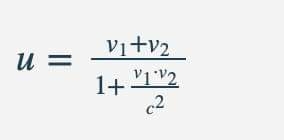
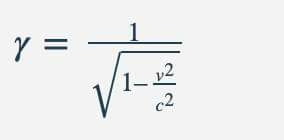
-
Who is the greatest screen hero of all time?
Very difficult to pick just one, but if I had to, I’d go with Rick (Humphrey Bogart) in “Casablanca.” Rick immediately wins over all the cynics in audience. He’s a loner who plays by his own rules, and why shouldn’t he? Life has dealt him a bad hand, but he reacts by at least being his own man, and being the one guy that the Nazis never manage to touch. Some great early dialog that shows Rick’s “attitude”:“Rick, why did you come to Casablanca?”
“For the waters.”
“But there are no waters in Casablanca.”
“I was misinformed.”
Rick obviously has nothing but contempt for the Nazis, but he prefers to just live among them while privately despising them – as well as the French who surrendered to them. And yet, in the end, he does the right thing (“The lives of three little people don’t amount to a hill of beans in this world”) and he even makes friends of the French Chief of Police.
“Louie, this could be the start of a beautiful friendship.”
But there are other great possibilities. Clark Gable as Rhett Butler in “Gone with the Wind,” playing about the only Southerner who – at the outset – foretells that such a war will end very, very badly for the South. Then he saves Scarlett and Melanie from disaster, again and again and again.
A personal favorite of mine is Mr Spock (Leonard Nimoy) in the Star Trek films. Conisder:
In Star Trek the Motion Picture he risks his life to communicate with V’ger.
In Star Trek II, he quite literally GIVES his life to save the Enterprise.
In Star Trek III, he’s resurrected, like Jesus.
In Star Trek IV, he talks to the whales, to help save the Planet Earth. Whew!
Dorothy Gale (in the Wizard of Oz) would be the greatest heroine of all time, except that the film adaptation strongly suggests it was all a dream in the end.But if you’re looking for a more recent, and very traditional, hero, you can’t do better than Harrison Ford as Indiana Jones. Unlike Frodo in “the Lord of the Rings,” Indy never ever gives into evil, not even for a moment. Harrison Ford’s triumph in this role, I think, is making a hero who overcomes so many odds believable, a feat in itself. Indiana Jones emerges as real, because Ford shows you that Indy feels the pain of his encounters, as did Humphrey Bogart before him
“WE’LL ALWAYS HAVE PARIS. HERE’S LOOKING AT YOU, KID.”

-
Who are some actors who thought leaving TV roles would help their careers, but in hindsight were mistaken?
Wil Wheaton had the Hollywood golden ticket in his hand, a major role in “Star Trek: The Next Generation” but he missed out on a role in a movie, and tossed the ticket away. His career never recovered. Star Trek Producers would not give him two weeks to film a role in the movie, “Valmont”, so he told Star Trek & Paramount he wanted out of his contract.
Wheaton had struck movie success in “Stand By Me”, at age 14, in 1984. His character, Gordie Lachance, had top billing and the movie was nominated for Academy and Golden Globe awards for screenplay and directing. Many consider it one of the most influential movies of the 1980’s.
He then landed the role of Wesley Crusher in “Star Trek; The Next Generation”. His character was named after Executive Producer and creator Gene Wesley Roddenberry, who was running the show. The scripts repeatedly had Wesley portrayed as the hero, saving the ship on numerous, some fans would argue TOO many, occasions. Wheaton had still not turned 18 when TNG first aired. He left during the 4th season, and missed out on a gravy train that is still turning out movies and TV series for the actors who stayed with the series. In total, Four major motion pictures and three years of “Star Trek; Picard” on Paramount’s app are just part of the potential series and movies in which Wheaton could have had major roles. Instead he has been tossed a couple of cameo roles. He was even asked to come and film a cameo role in “Star Trek:Nemesis” but producers edited his appearance out of the film.
Wheaton’s most noted role since giving Paramount the finger? More cameo roles, playing himself, on the TV series, “The Big Bang Theory.”
He now hosts a Paramount publicity show that discusses new Star Trek episodes and series called, “The Ready Room”. In that show he talks to his old cast mates about their newest roles while he watches from the outside. LL&P

-
-
-
"I guess I was born with a baseball in my hand. I enjoyed it more than anything."
Ten year old Edith Houghton, who was so small that her uniform had to be "cinched with pins and string" to fit, was the starting shortstop and the star of her team, the semi-pro Philadelphia Bobbies.
She would go on to serve during WWII as a member of the Women Accepted for Volunteer Emergency Services. And then after pitching herself to the Philadelphia Phillies owner, she become a baseball scout for the team. Her philosophy as a scout was that “players must be big, and they must be fast. But they must be able to hit. I learned early in my baseball career that you can’t steal first base.”
Edith would rejoin the Navy to during the Korean and Vietnam wars.
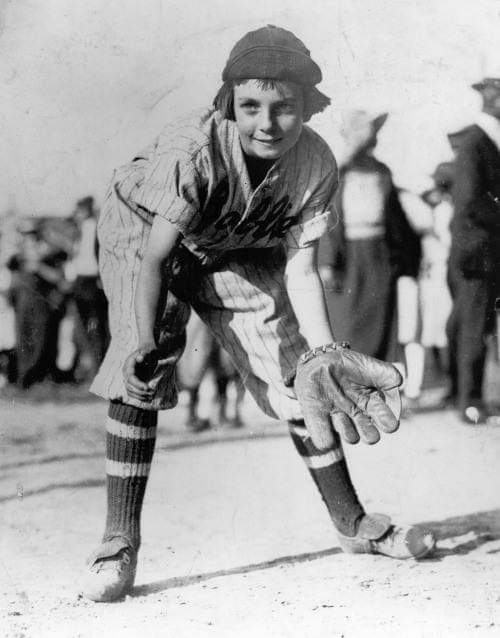
-
Roughnecks are horrible ....glad I went to San Antonio with Wade..... lol
-
17 minutes ago, BarryLaverty said:
Per capita those stats. So, nope.
Paraphrasing what Bum Phillips said about statistics......you can't trust them cause a guy drowned in a lake that averaged 2 feet in depth.....so your numbers are deceptive......
-
13 hours ago, BarryLaverty said:
The murder rate there is 11x less than ours.
Their population is 13x less than ours......your math is deceptive.....
-
-
God’s Workers
Last week, we talked about God’s House. We mentioned the materials needed to build upon the foundation of Christ. When we obey the Gospel and become Christians, our journey is just beginning. Some people think that all they have to do after being baptized is sit in a pew once a week and go through the motions of a worship service. God didn’t end things there. He expects us to be faithful to Him for the rest of our lives.
Revelation 2: 10Being faithful, means we will continue to be obedient to His Word. In that Word, God has stated that His children must be solid, steady workers.
I Corinthians 15: 58In today’s lesson, we are going to dig into that passage and see the traits of a worker for the Lord.
First, a worker for the Lord must be stable. This means that this person is not easily influenced by false teaching. They realize that there is only one path to God.
John 14: 6They understand that there is only one TRUTH.
Ephesians 4: 4 - 6God’s worker is not one who allows false teaching to distract him. God’s worker will study God’s Word and grow in knowledge of that.
I Timothy 4: 6 - 8Those who work for God are not easily influenced by distractions and discouragements. Even persecution and adversity don’t stop a steady worker for the Lord from continuing in his labors.
Romans 8: 34 - 36God’s workers continue steadily in their labors, even when they can see no visible results from their work. They continue even if they are suffering from personal problems. They encourage and build one another up in difficult times.
Romans 1: 11 - 13
Colossians 2: 1 - 3God’s workers are steadfast and immovable.
God’s workers are always working. Just like our Lord, we are always drawn to do God’s Will.
John 9: 4
The apostles give us an example this non-stop attitude.
Acts 5: 42This non-stop attitude is exemplified by the first century disciples.
Acts 2: 42
Paul tells of the non-stop work habits of a child of God by showing us his example.
Philippians 3: 12 - 14
God’s workers are persistent and they persevere over all obstacles. They don’t sputter around and they don’t give up when things aren’t working out perfectly. God’s workers are always working.God’s workers are always willing and eager to work hard. They don’t just do the bare minimum and hope that it's good enough. They are willing to go the extra mile.
Matthew 5: 41
They know that in order to reap a great harvest, one must work hard at sowing the seed.
II Corinthians 9: 6The Macedonians were hard workers for God.
II Corinthians 8: 1 - 5
Paul was eager to get to work in Rome.
Romans 1: 15
God’s workers will always do God’s Work. Not all work that is done in religion is God’s work. God is not honored when our work is without scriptural authority. The work of the Lord is that which He authorized. We can find all we need to know in His Word.
II Timothy 3: 16 - 17When we zealously do the work God has laid out for us, following His authority in the New Testament, we will not be working in vain. A lot of the religious work going on in the world is in vain, because it has no scriptural authorization. Those doing these vain works will be surprised on Judgement Day if they don’t take the time to learn what God has authorized and repent of their sinful practices.
Matthew 7: 21 - 23
If we are doing the work of the Lord, it is never in vain. We should encourage one another and be encouraged by the great examples we have from scripture of those who did God’s Work.
Hebrews 11: 32 - 38
Let’s continue to live faithfully unto death by doing the works that God has shown us in the New Testament that His children must do. Let’s never give up, no matter what happens to us. Let’s never give up, even if we feel we aren’t accomplishing anything. Laying treasure up in heaven means we will work and not worry. -
Vol.XX No.XI Pg.5January 1984
Use Your Bible
Dan S. Shipley
"LEST HAPLY WE DRIFT..." (Heb. 2:1-3)
Intro.
1.Defecting from the faith is not usually an overnight process, but rather a gradual leaving; a drifting away such as mentioned in this text. 2.Notice these things about drifting...
I. ITS DECEPTIVENESS
A. Not by design 1.No one plans to become an apostate, unfaithful 2.Simply doing nothing is enough to begin the drifting process 3.No such thing as premeditated neglect
B. Often undiscernable for a time 1.Because most reluctant to admit its possibility in their own life 2.Because we compare ourselves with others rather than by God's standard (2 Cor. 10:12,18) 3.Consider plight of Laodiceans while thinking themselves to be in need of nothing (Rev. 3:17) 4.Points up need for continual self-examination (2 Cor. 13:5)
II.ITS DIRECTION
A. Drifting is always downstream 1."Away" (v. 1) None drift to God, righteousness, heaven 2.The derelict ship never drifts safely into port 3.Discipleship requires diligence and effort; most leave God simply by doing nothing
III.ITS INFLUENCE
A. As the derelict ship poses a danger to all, so does the drifter 1.No husband or wife neglects God without hurting each other (1 Cor. 7:16) 2.No parent neglects God without hurting his children (Eph. 6:4)
IV. ITS END
A. "How shall we escape.."? (v.3) 1.2 Thss. 1:7-9, etc.
V. Its Deterrent
A. "..We ought to give the more earnest heed..." (v.1) 1.Heedfulness to that spoken and confirmed word; yea, more earnest heed! 2.Ps. 119:11 "Thy word have I hid in mine heart, that I might not sin against thee."
CONCLUSION AND APPLICATION
A. Drifting Christians is one of the most serious problems in the church today. Is it a problem with you?










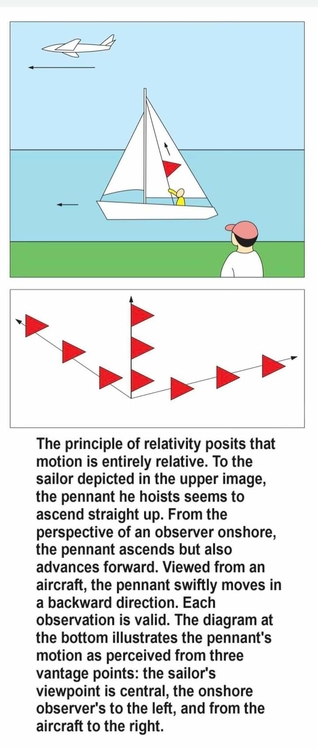
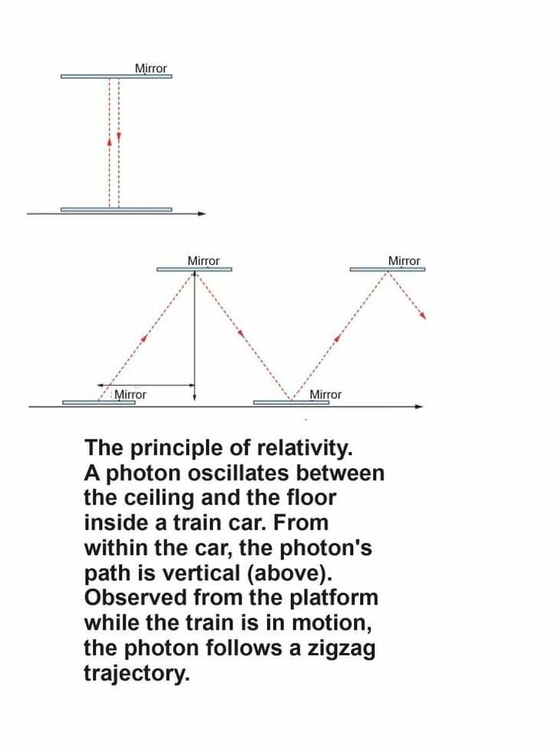
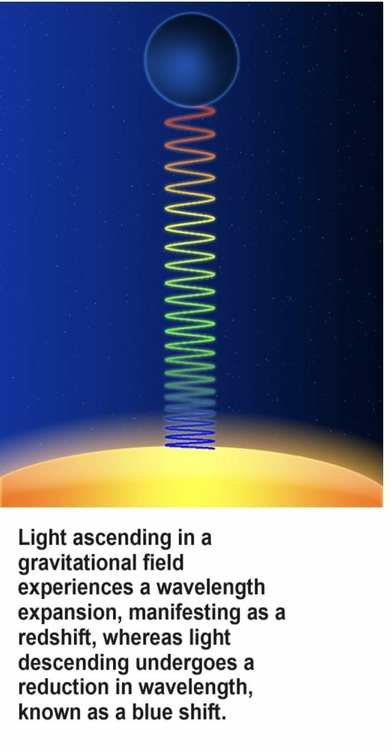
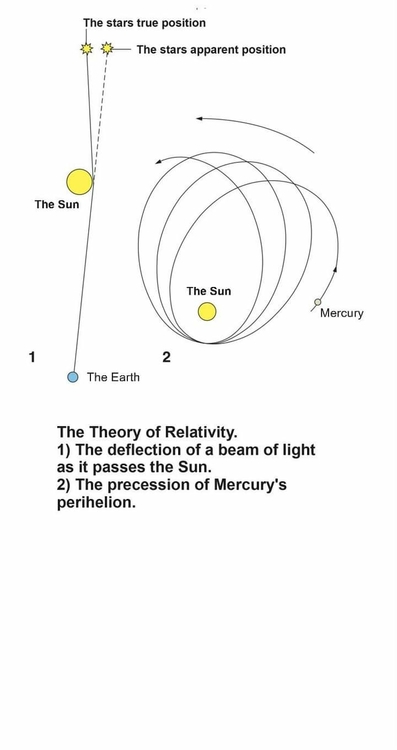
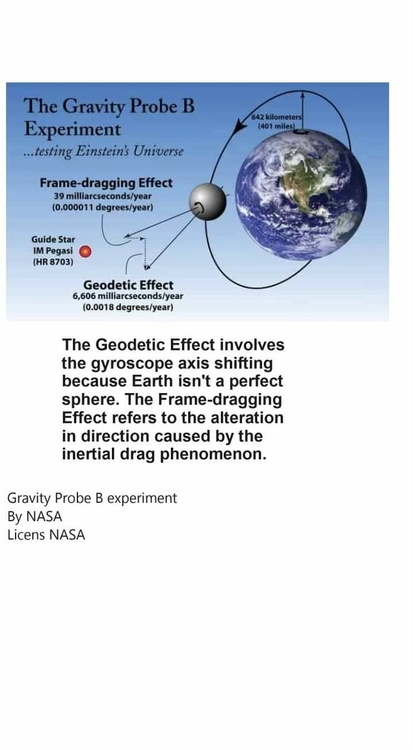
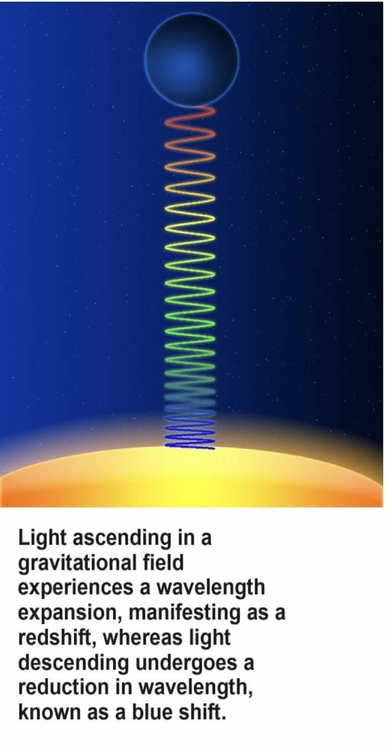



Math and Science
in Other Topics
Posted
This is probably the best answer I've ever heard to the question, "Why did God create evil?"
READ THIS…
Why did God create evil? The answer struck me to the core of my soul!
A professor at the university asked his students the following question:
- Everything that exists was created by God?
One student bravely answered:
- Yes, created by God.
- Did God create everything? - a professor asked.
“Yes, sir,” replied the student.
The professor asked :
- If God created everything, then God created evil, since it exists. And according to the principle that our deeds define ourselves, then God is evil.
The student became silent after hearing such an answer. The professor was very pleased with himself. He boasted to students for proving once again that faith in God is a myth.
Another student raised his hand and said:
- Can I ask you a question, professor?
"Of course," replied the professor.
A student got up and asked:
- Professor, is cold a thing?
- What kind of question? Of course it exists. Have you ever been cold?
Students laughed at the young man's question. The young man answered:
- Actually, sir, cold doesn't exist. According to the laws of physics, what we consider cold is actually the absence of heat. A person or object can be studied on whether it has or transmits energy.
Absolute zero (-460 degrees Fahrenheit) is a complete absence of heat. All matter becomes inert and unable to react at this temperature. Cold does not exist. We created this word to describe what we feel in the absence of heat.
A student continued:
- Professor, does darkness exist?
— Of course it exists.
- You're wrong again, sir. Darkness also does not exist. Darkness is actually the absence of light. We can study the light but not the darkness. We can use Newton's prism to spread white light across multiple colors and explore the different wavelengths of each color. You can't measure darkness. A simple ray of light can break into the world of darkness and illuminate it. How can you tell how dark a certain space is? You measure how much light is presented. Isn't it so? Darkness is a term man uses to describe what happens in the absence of light.
In the end, the young man asked the professor:
- Sir, does evil exist?
This time it was uncertain, the professor answered:
- Of course, as I said before. We see him every day. Cruelty, numerous crimes and violence throughout the world. These examples are nothing but a manifestation of evil.
To this, the student answered:
- Evil does not exist, sir, or at least it does not exist for itself. Evil is simply the absence of God. It is like darkness and cold—a man-made word to describe the absence of God. God did not create evil. Evil is not faith or love, which exist as light and warmth. Evil is the result of the absence of Divine love in the human heart. It’s the kind of cold that comes when there is no heat, or the kind of darkness that comes when there’s no light.
The student's name was Albert Einstein.